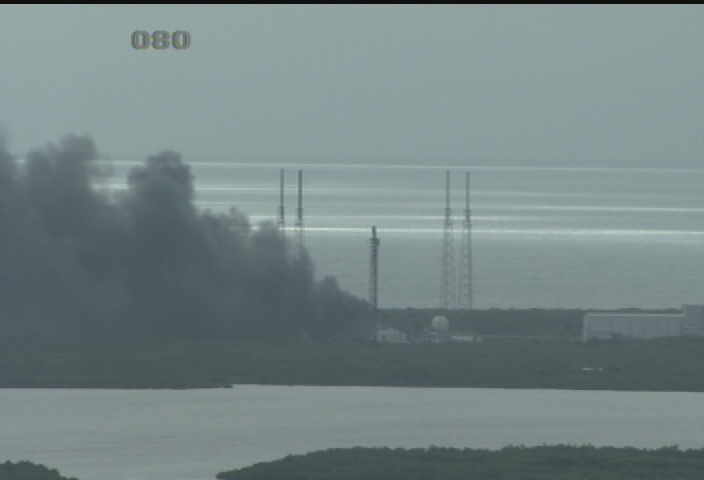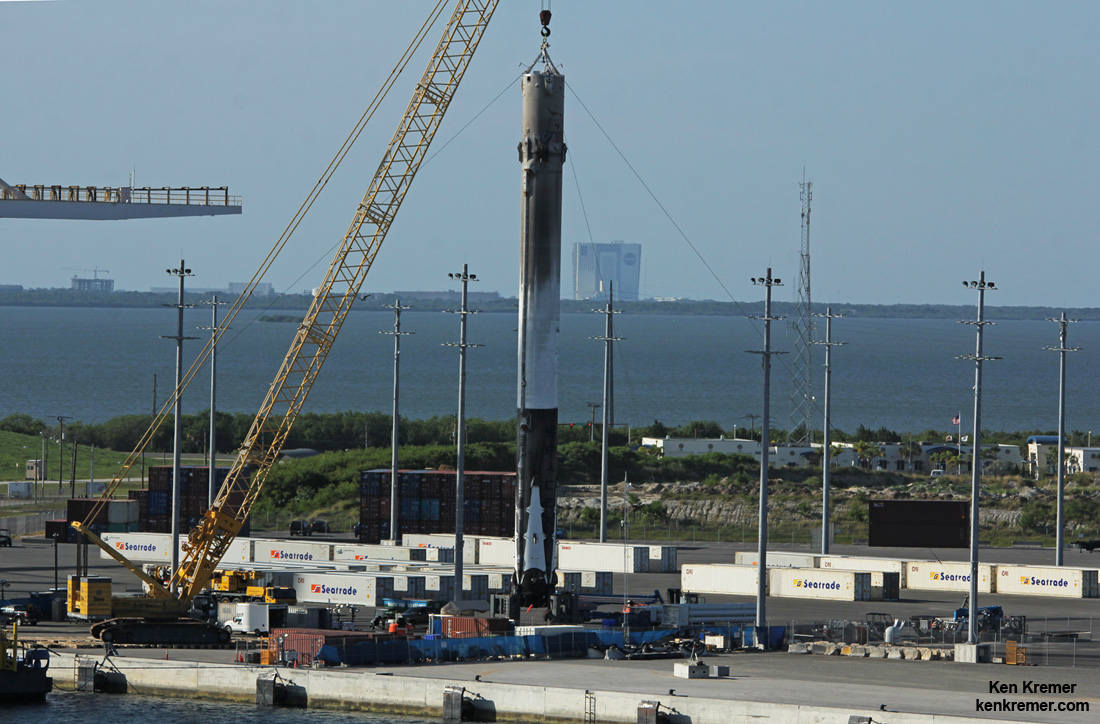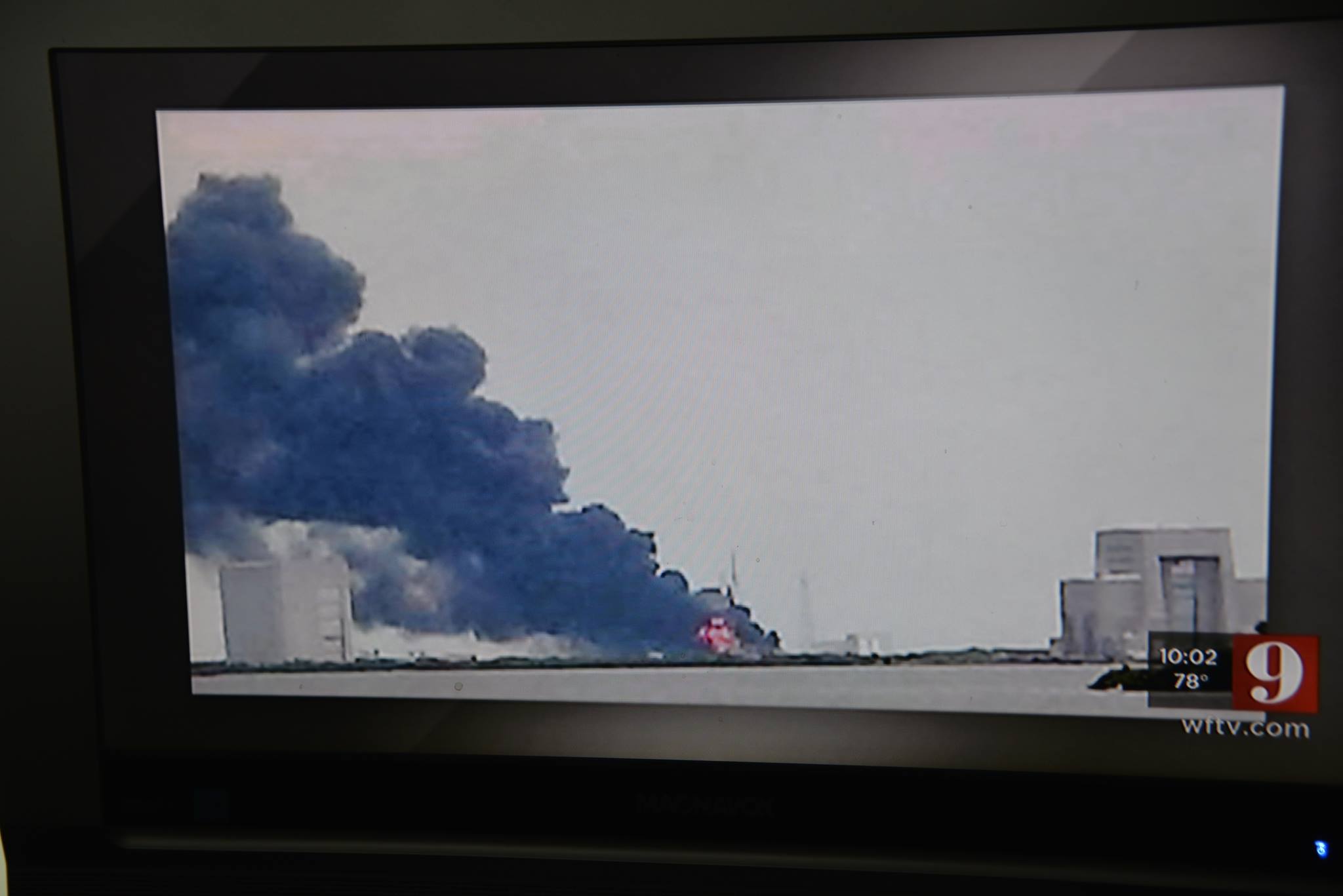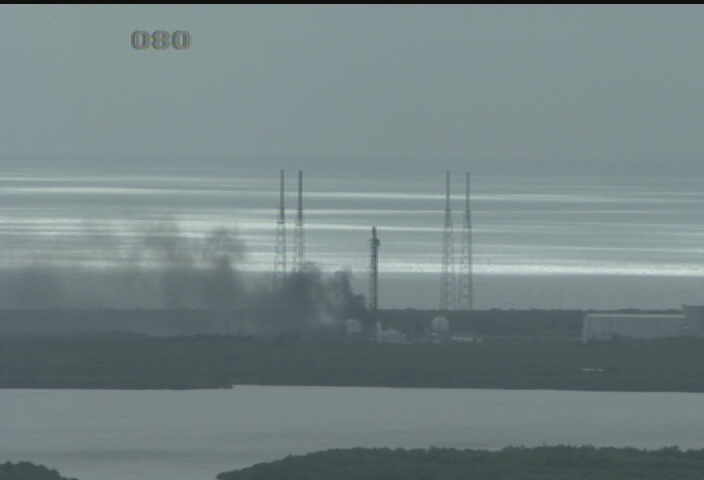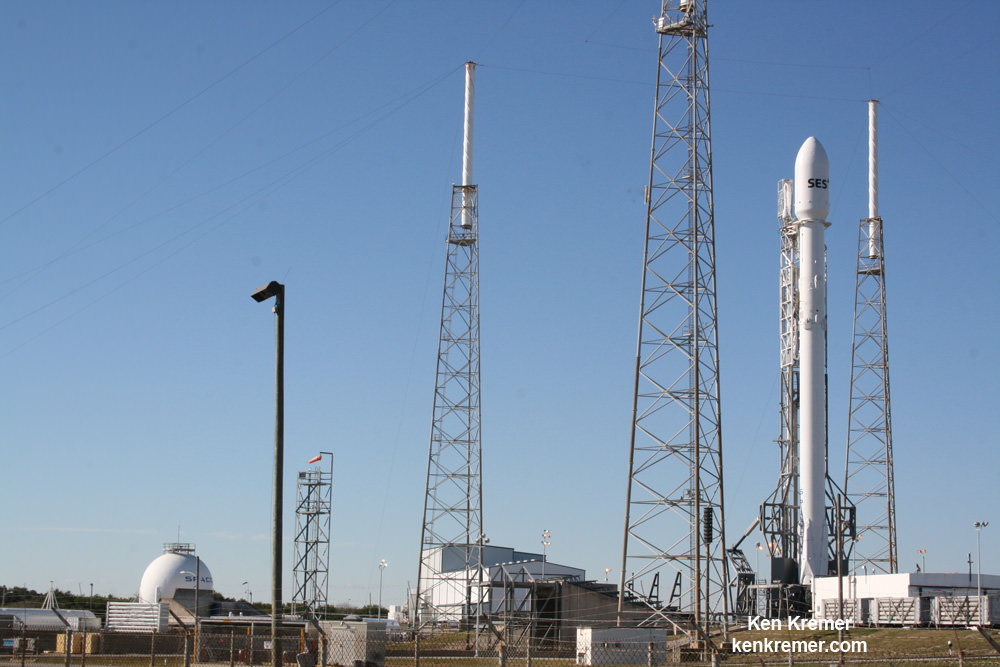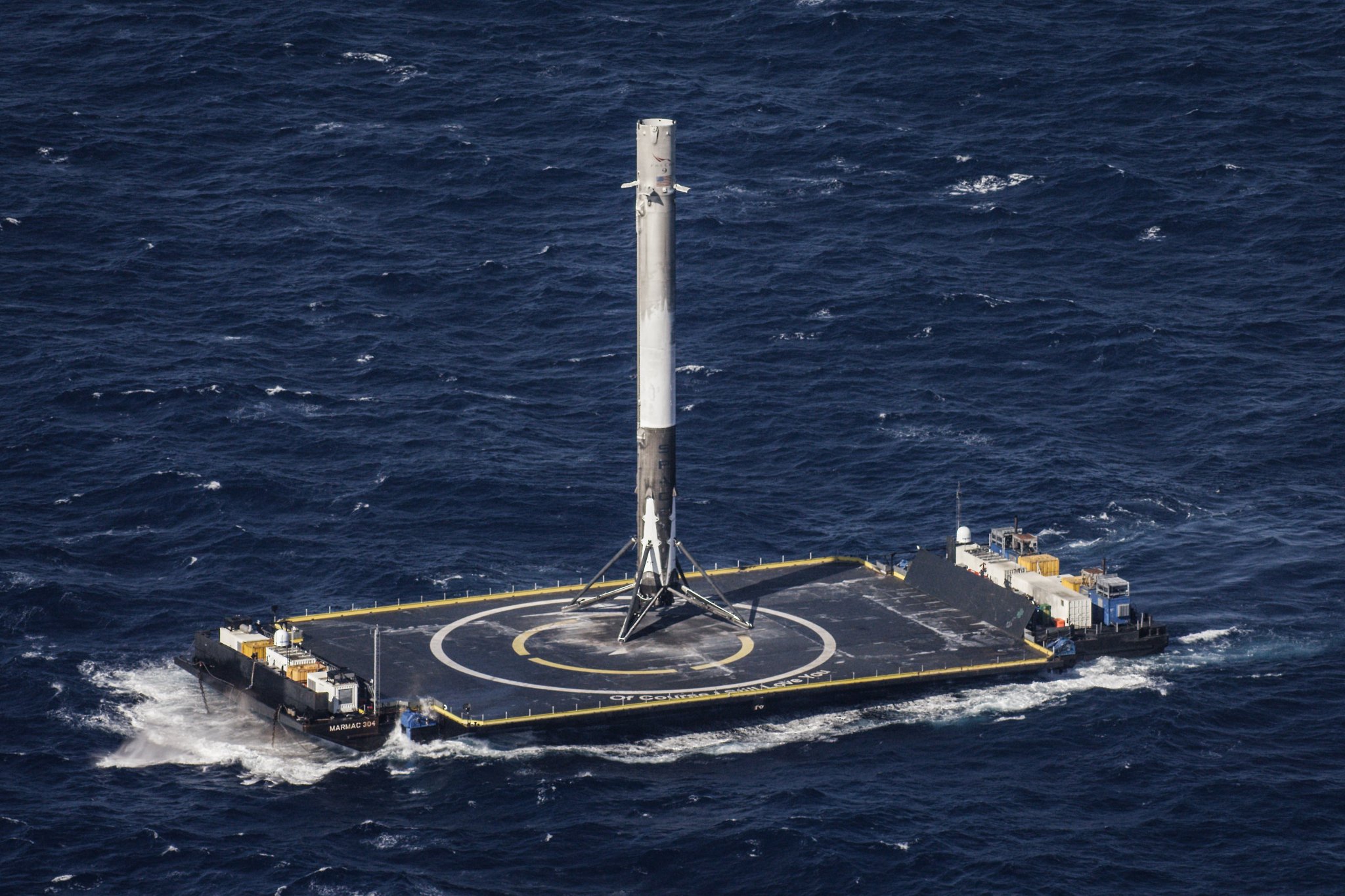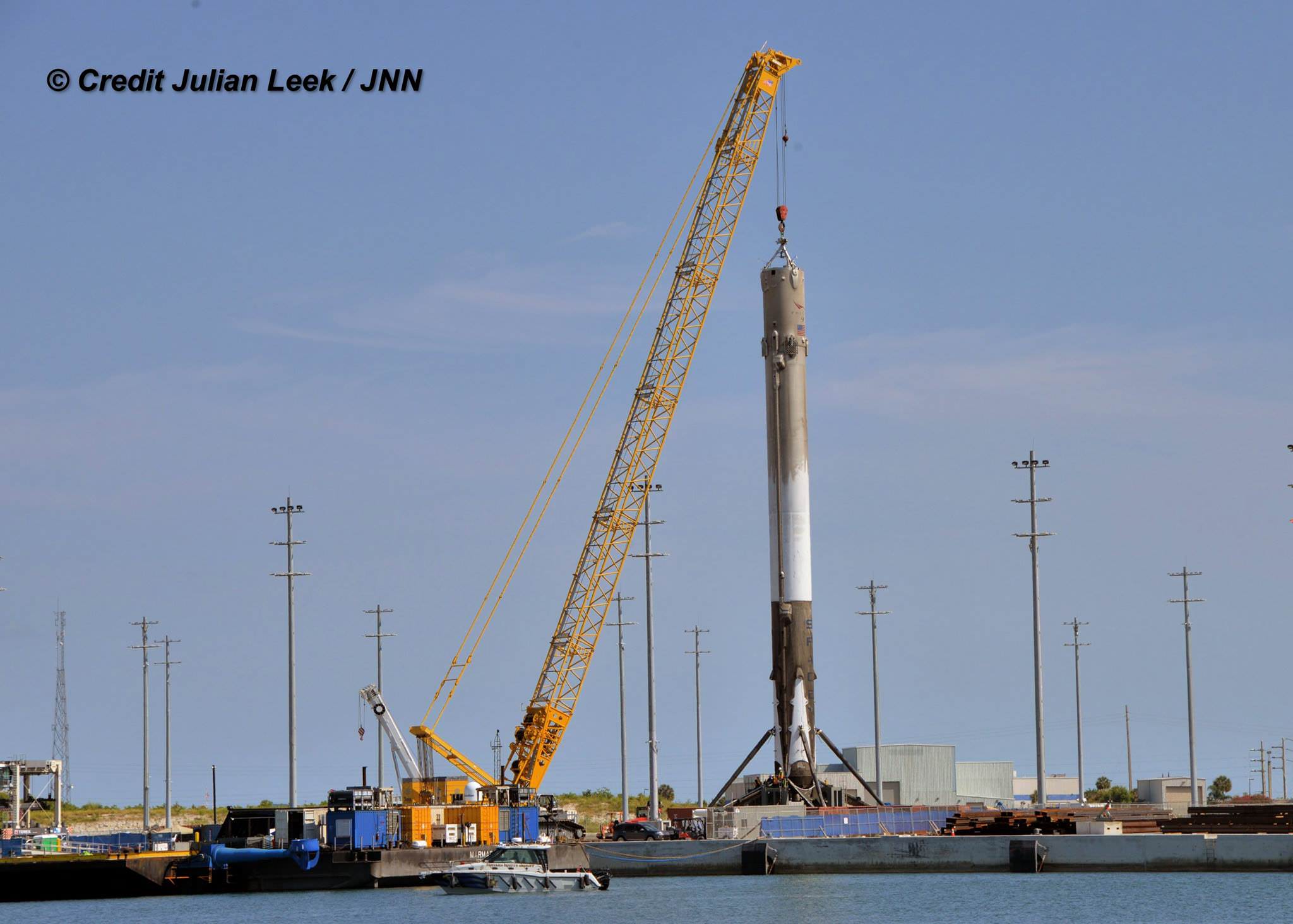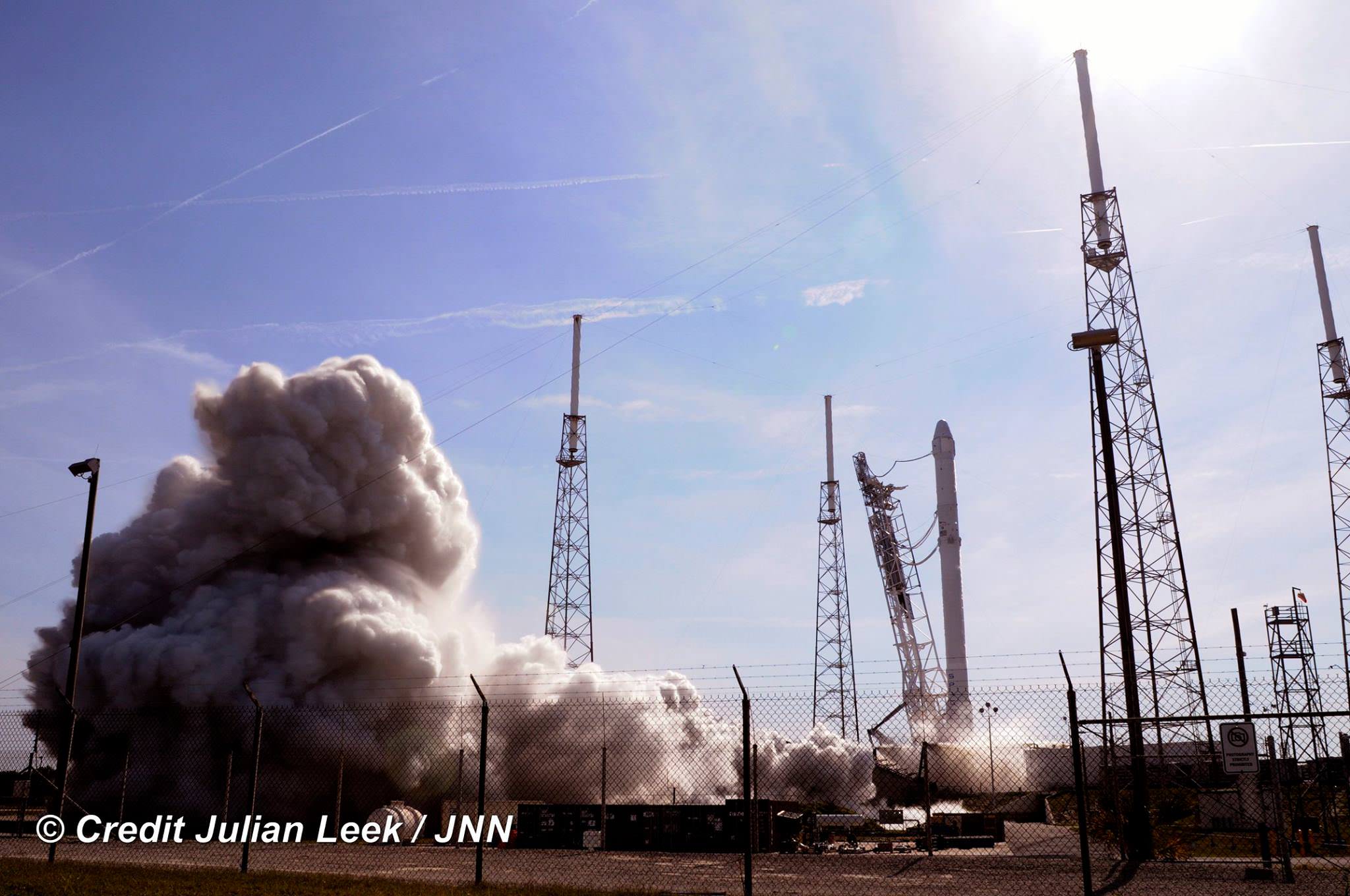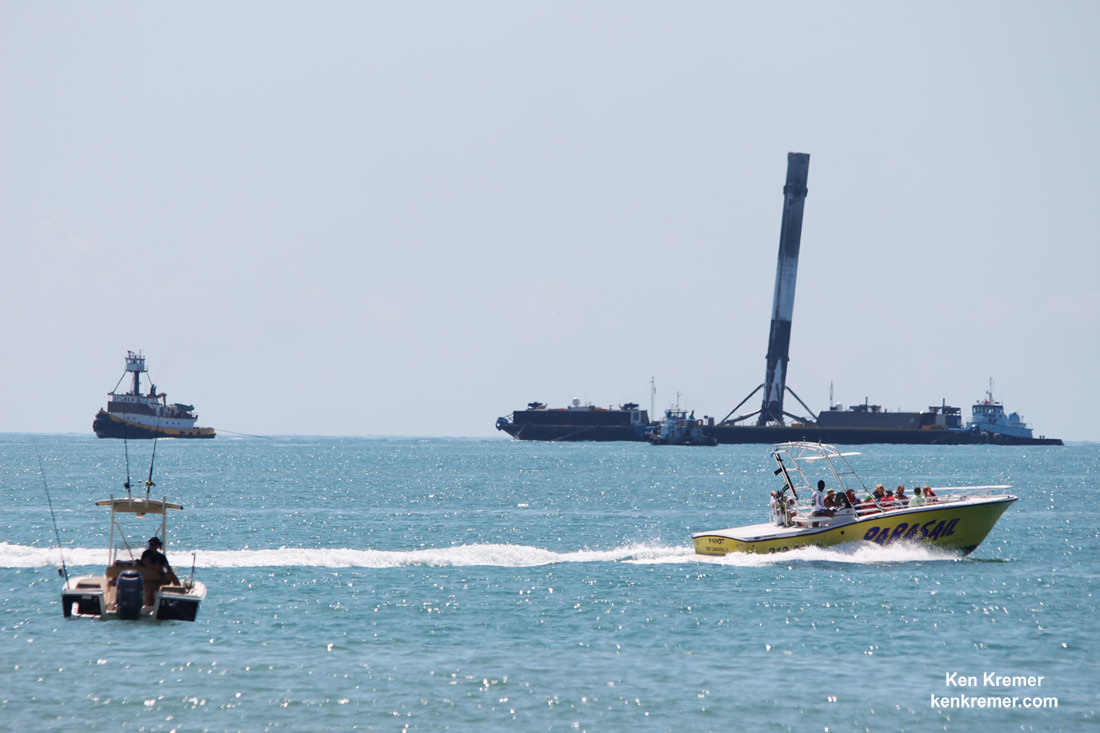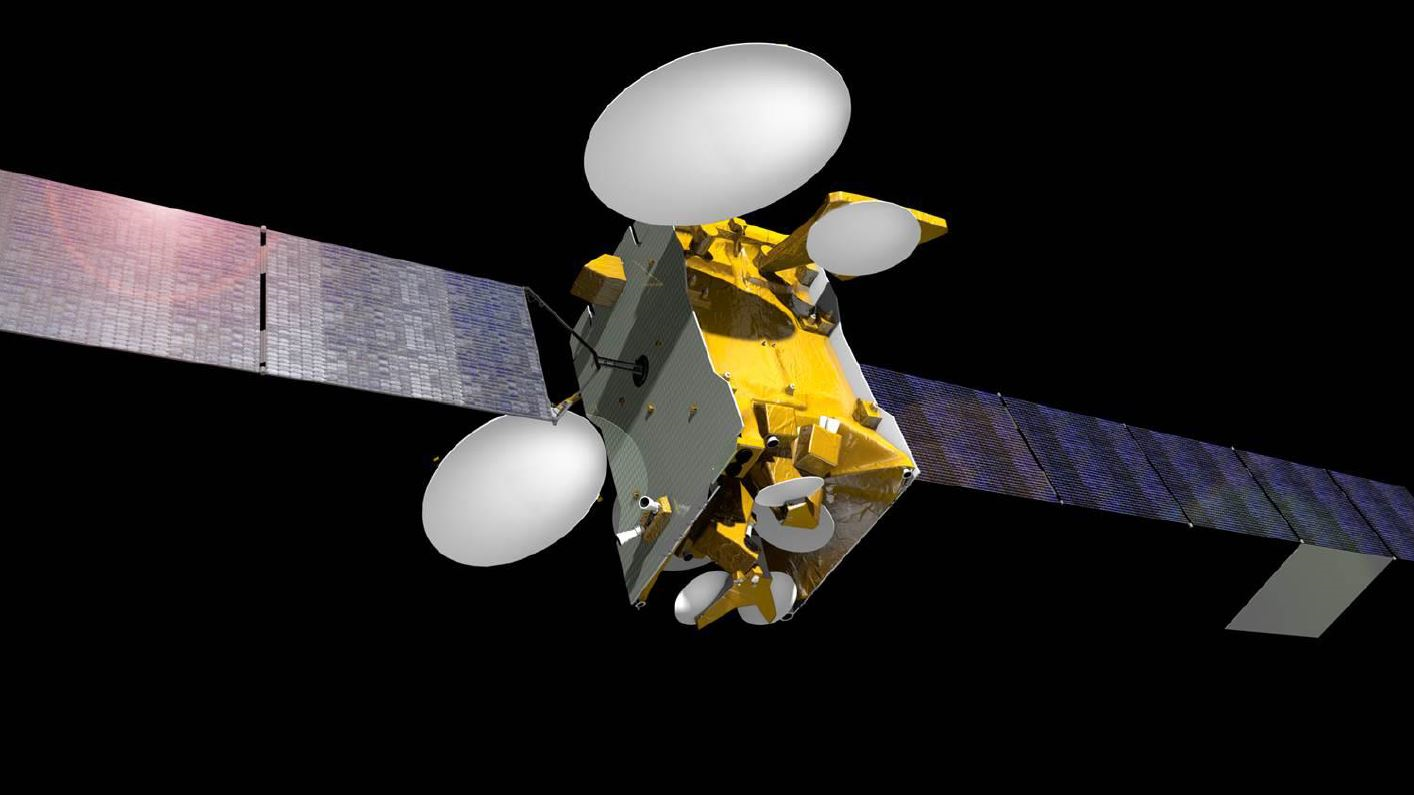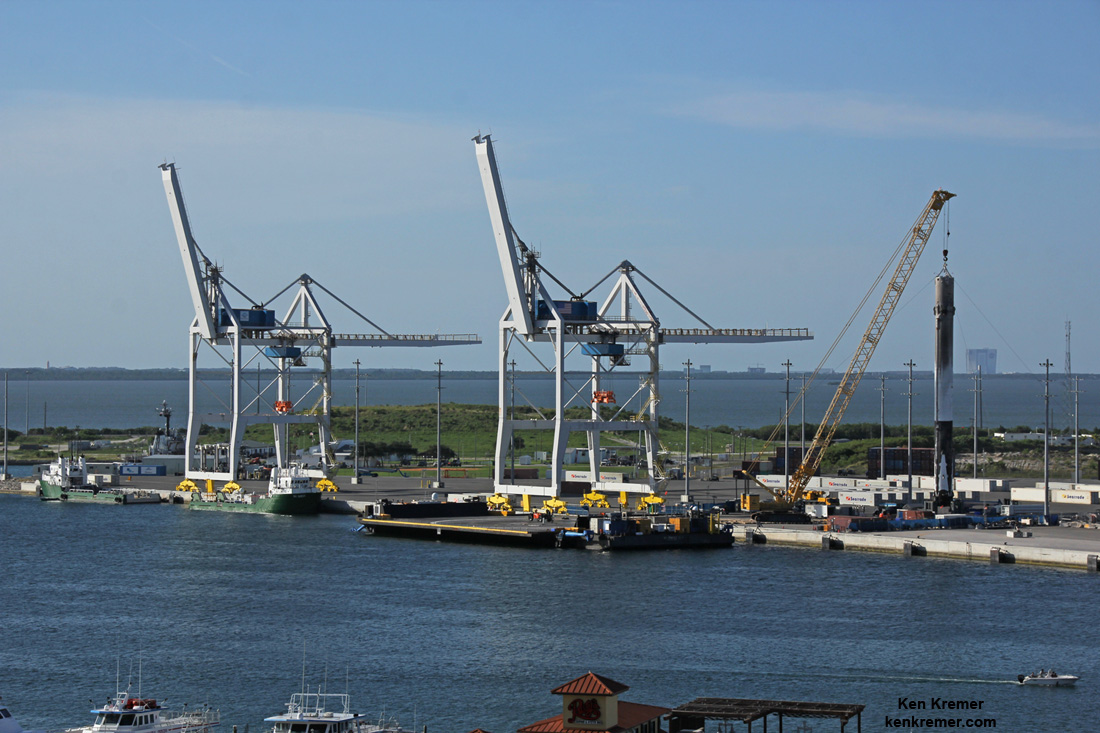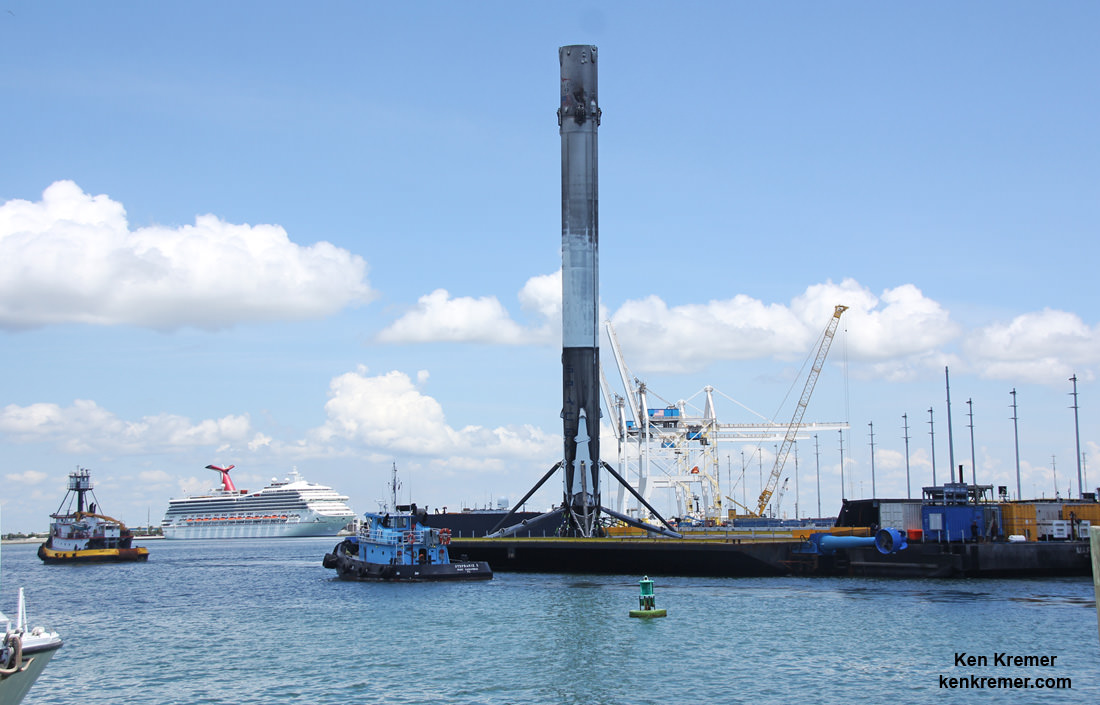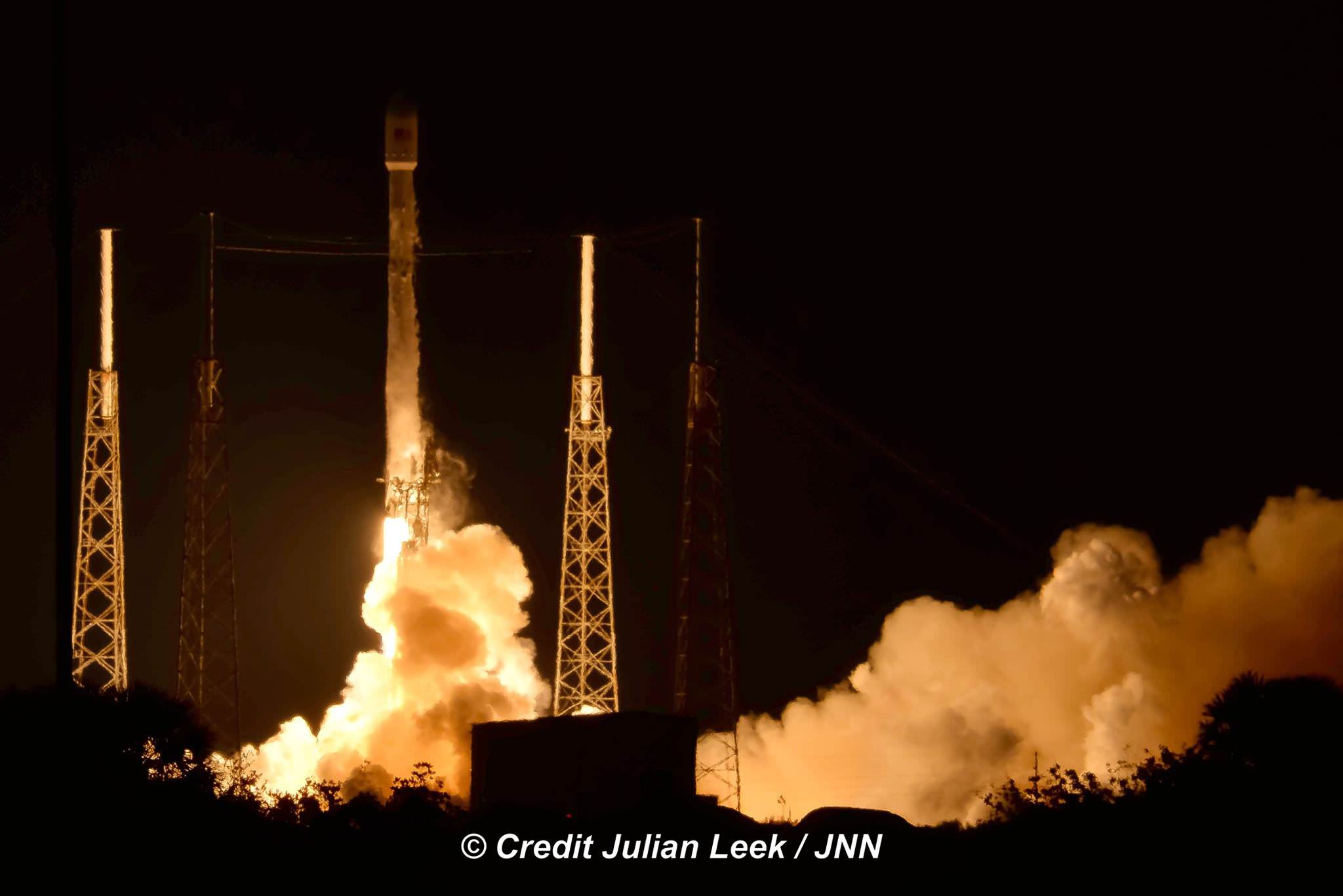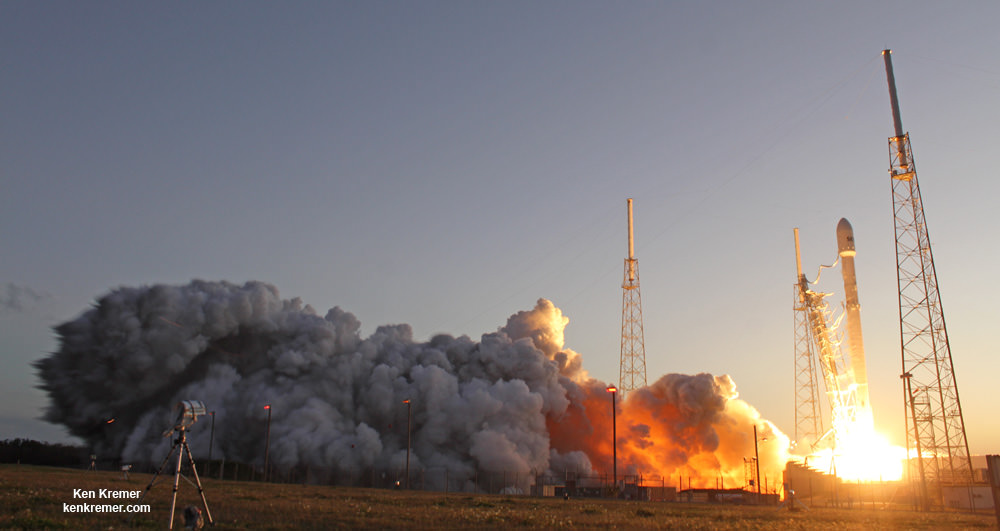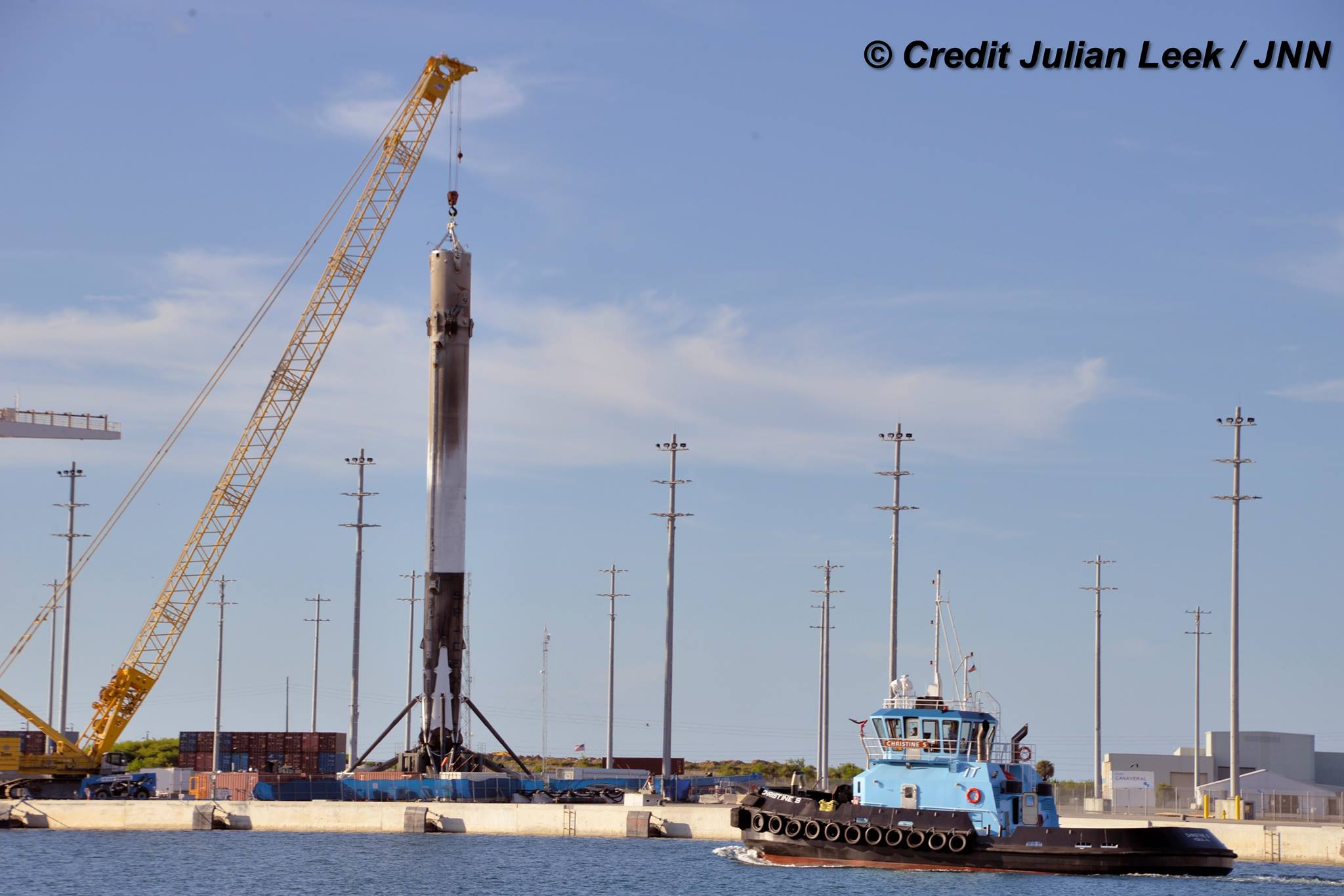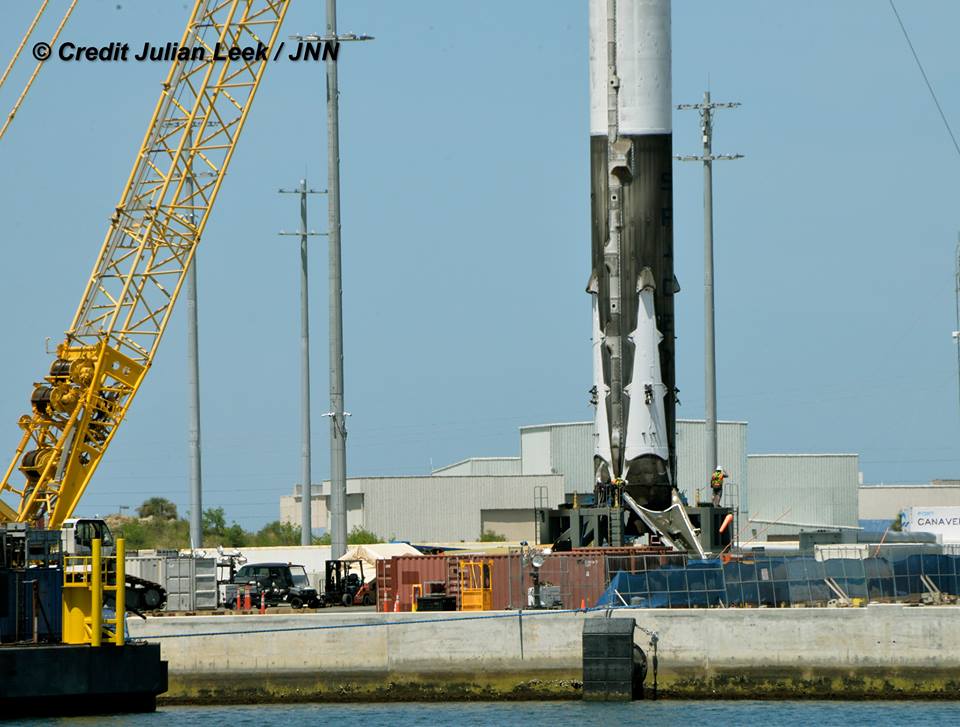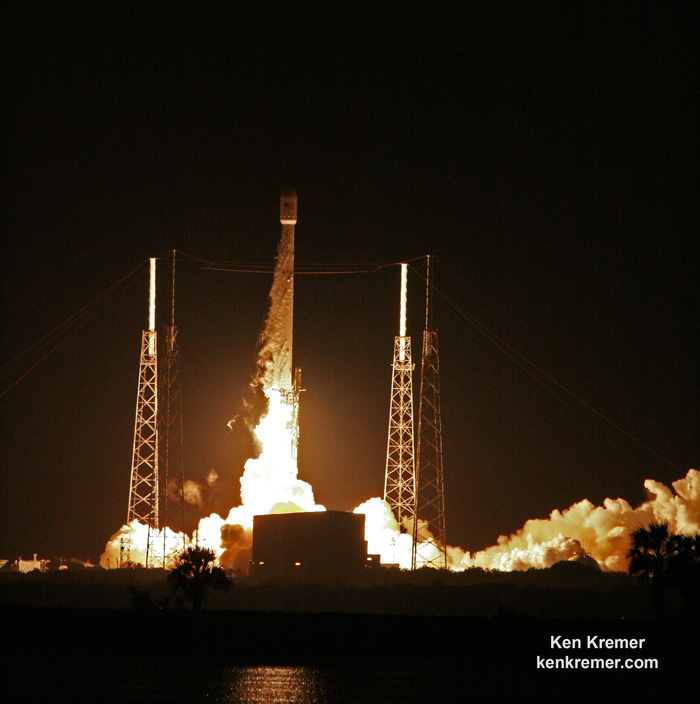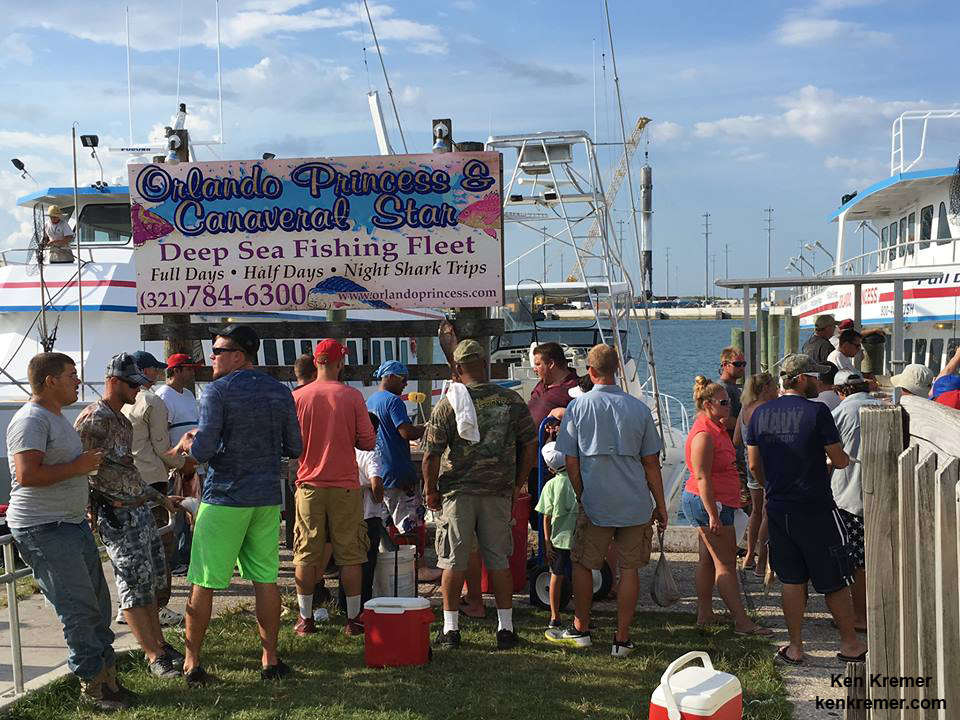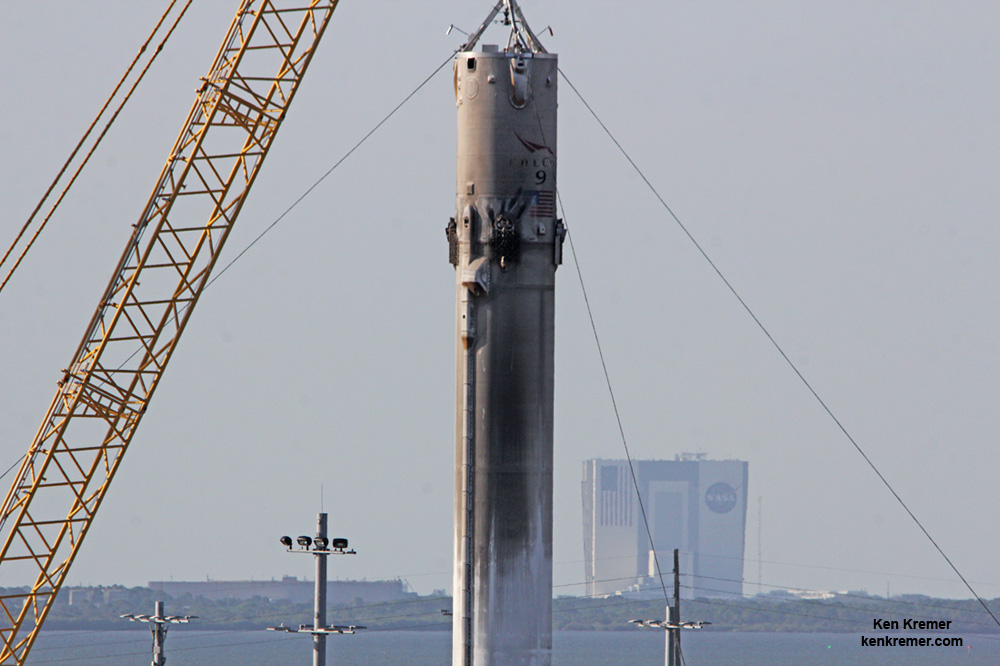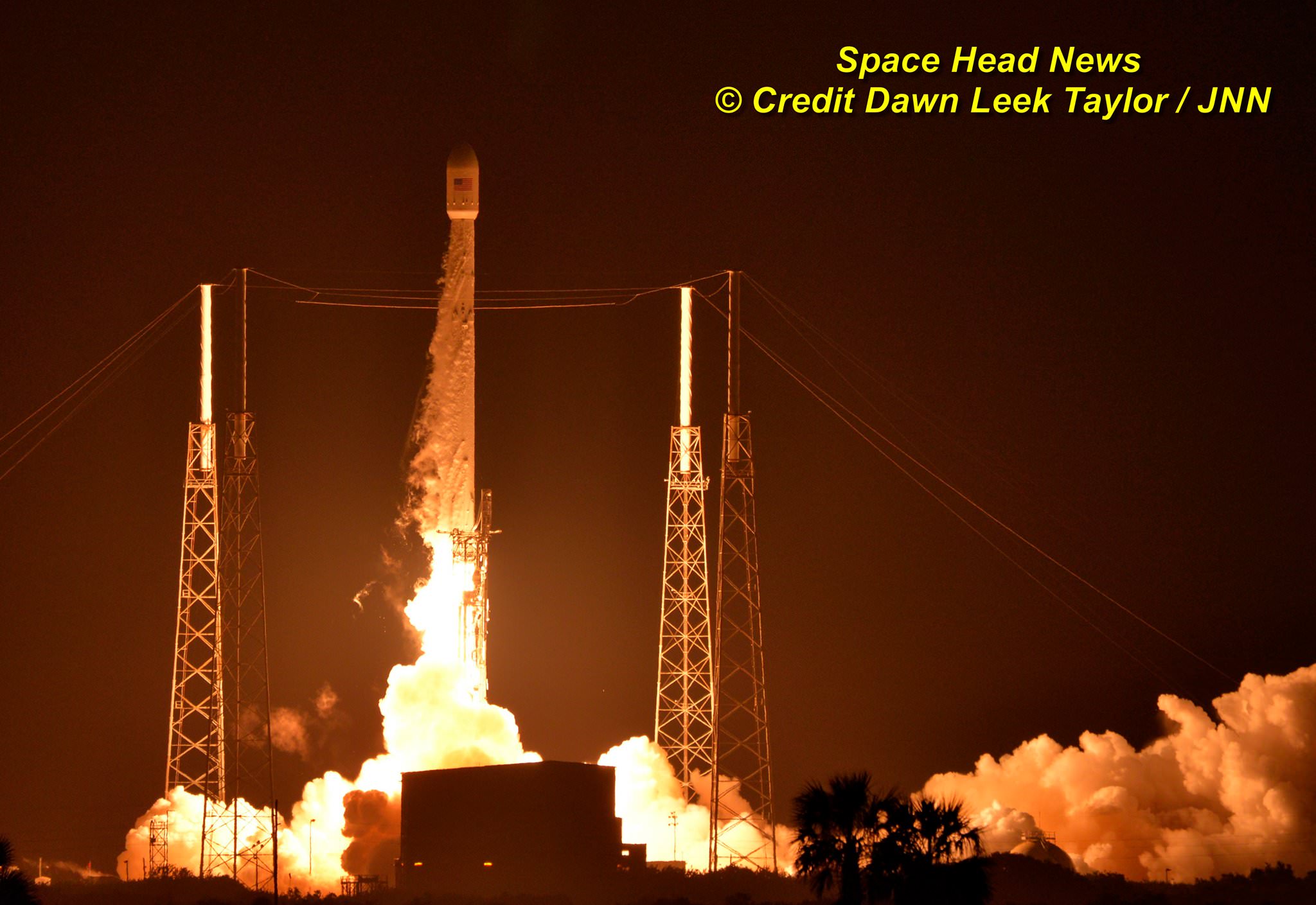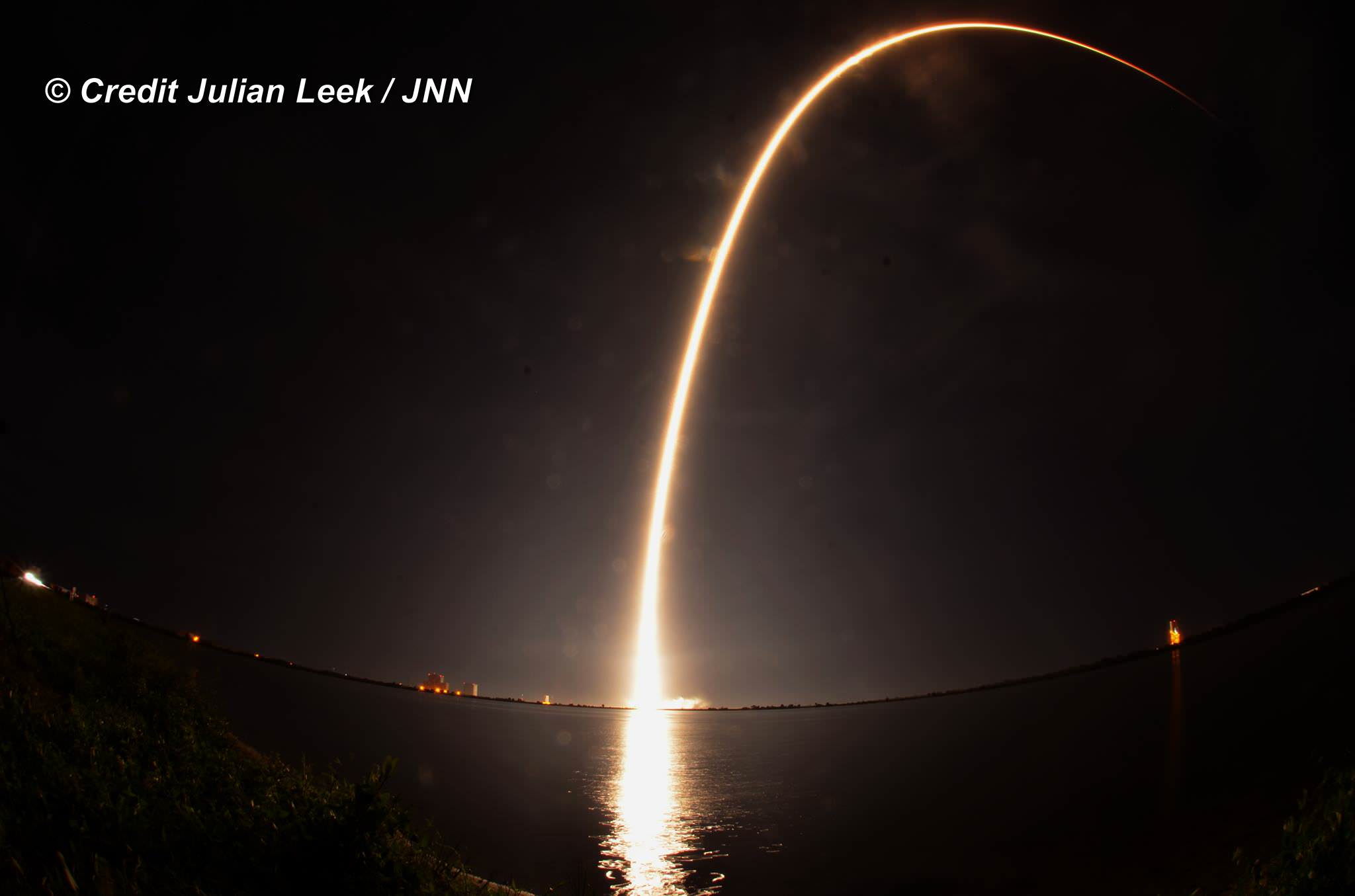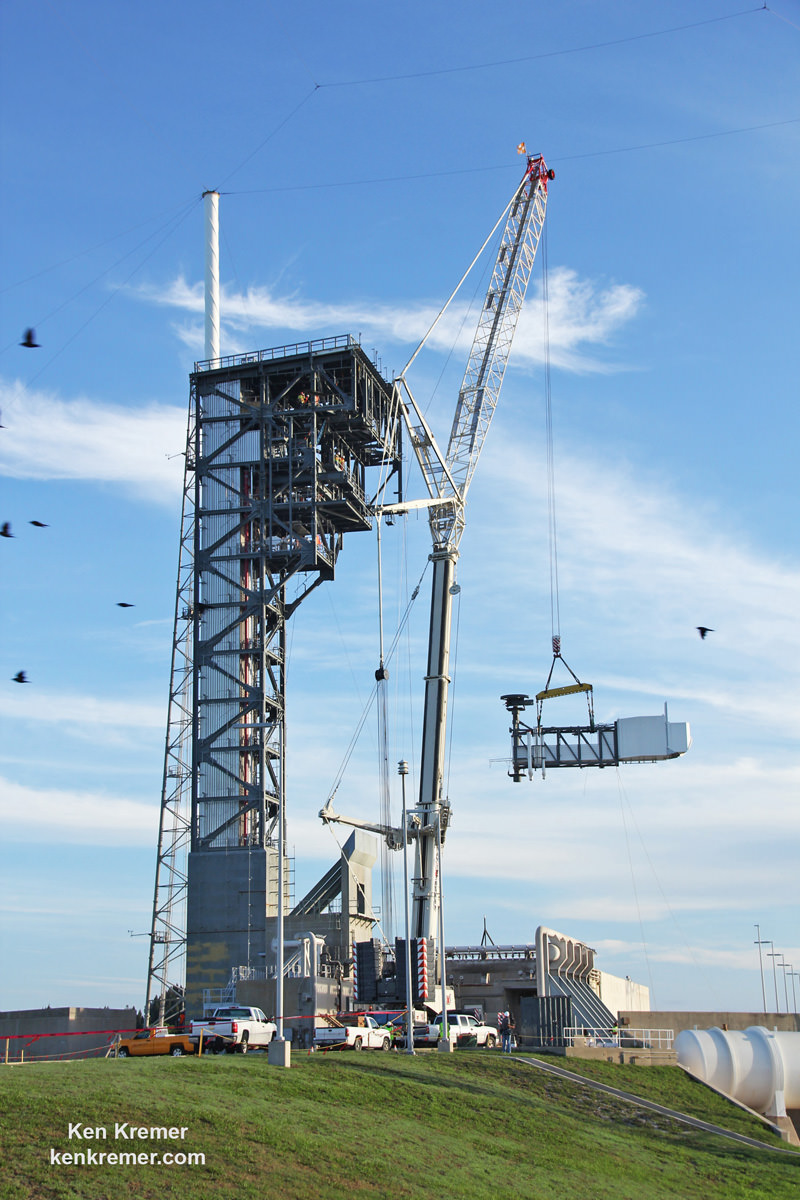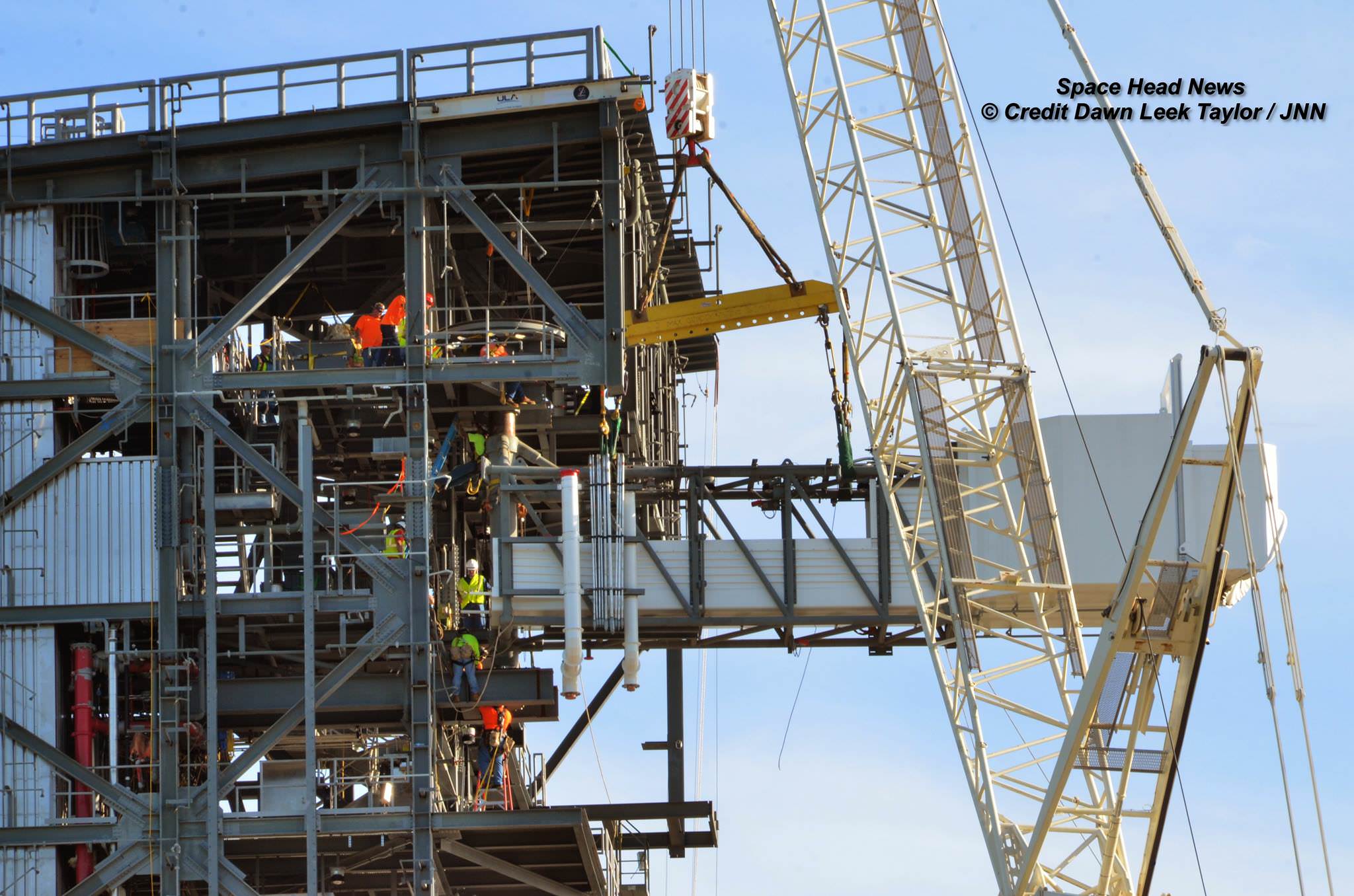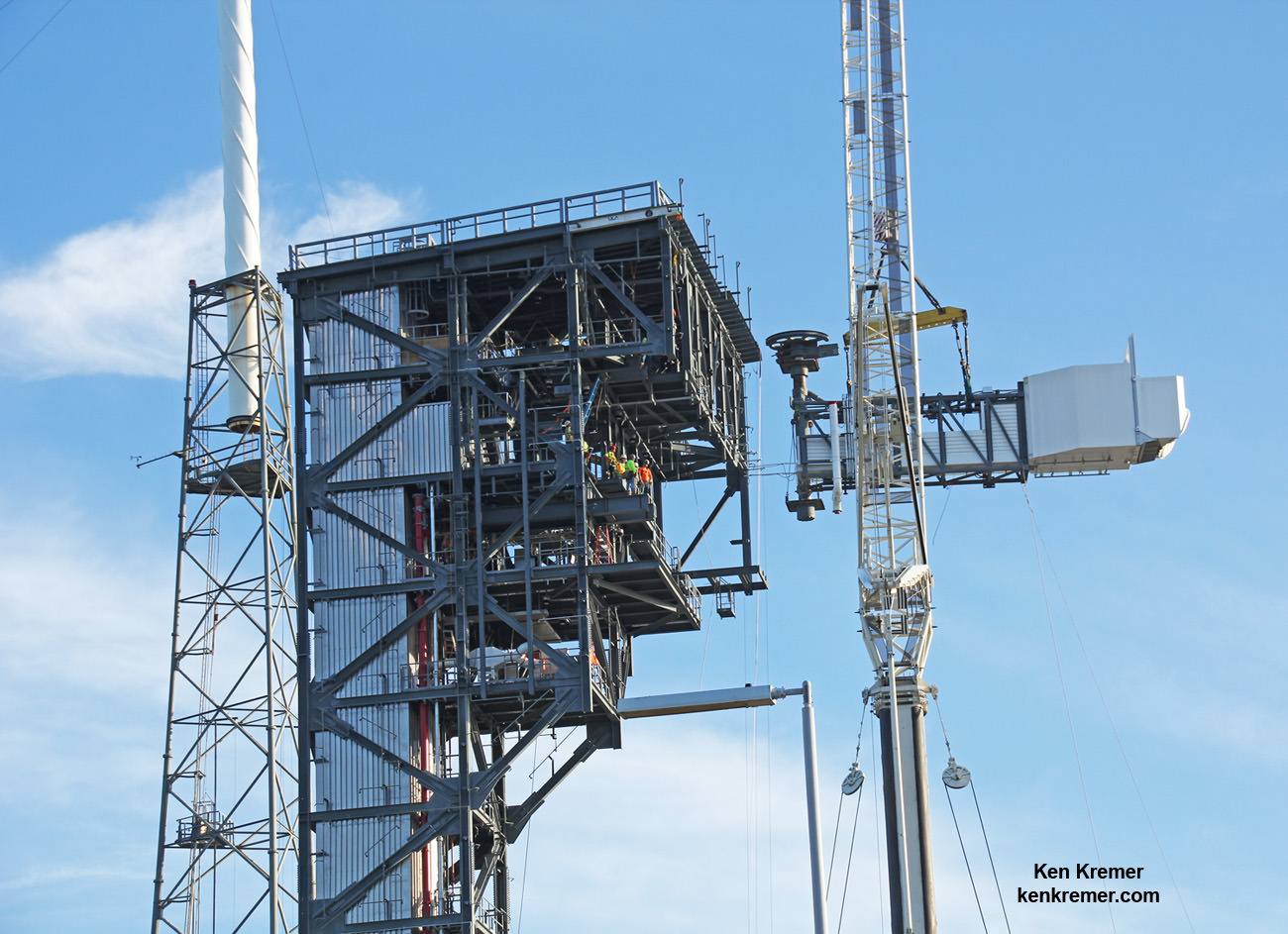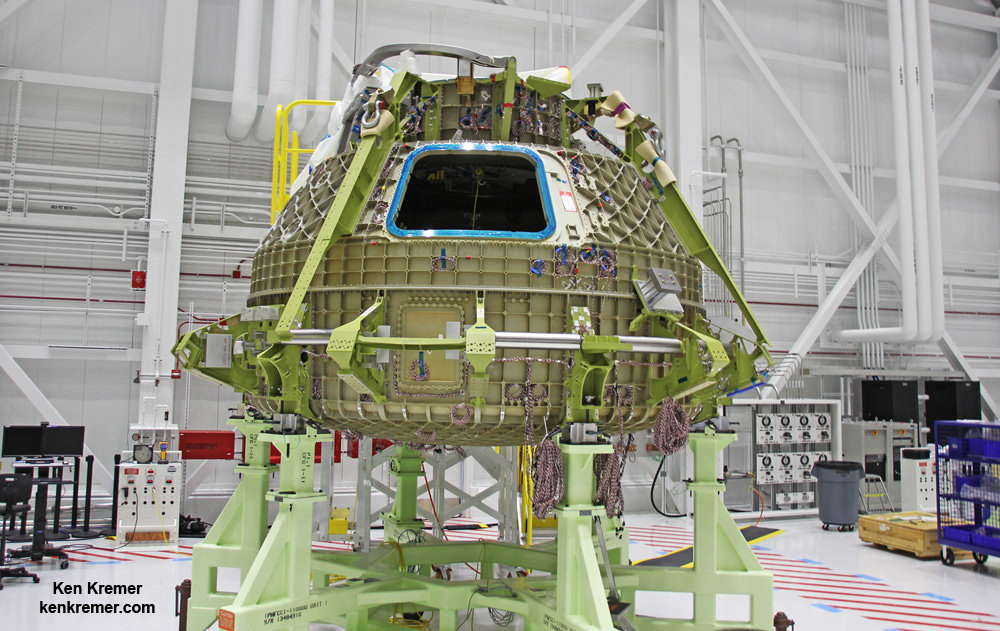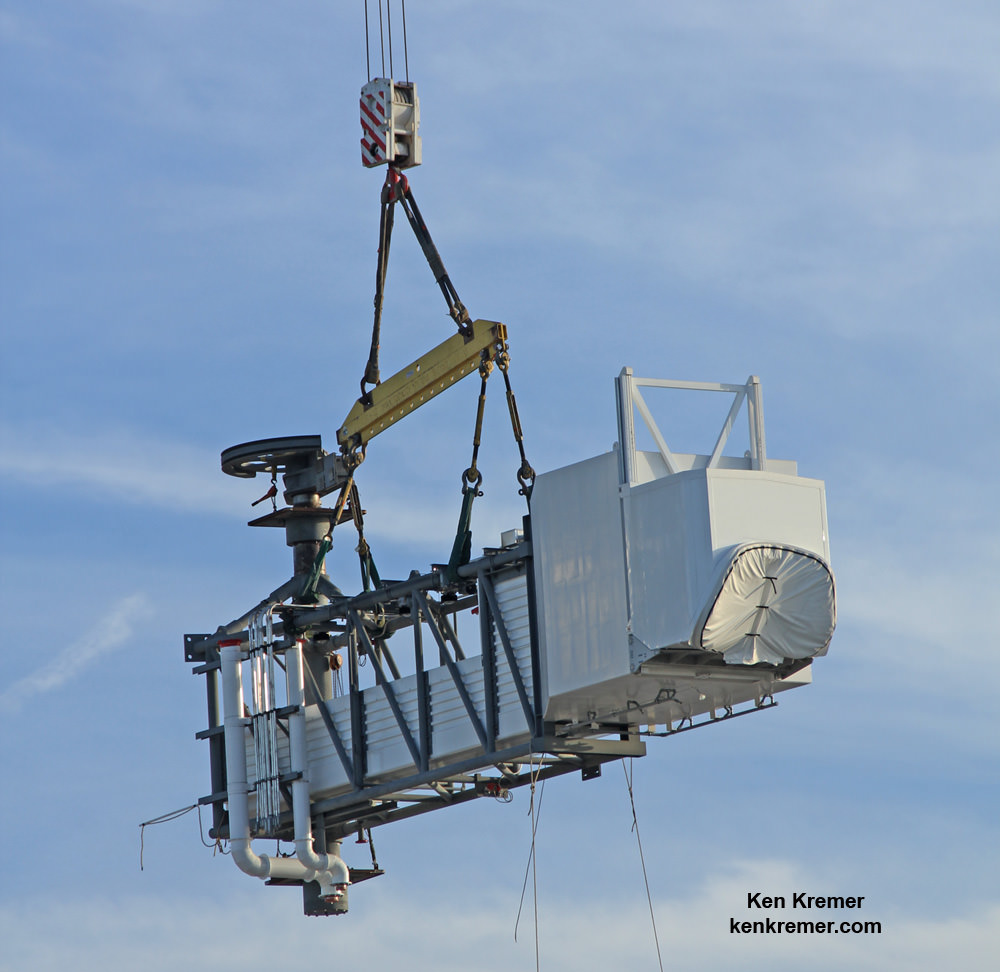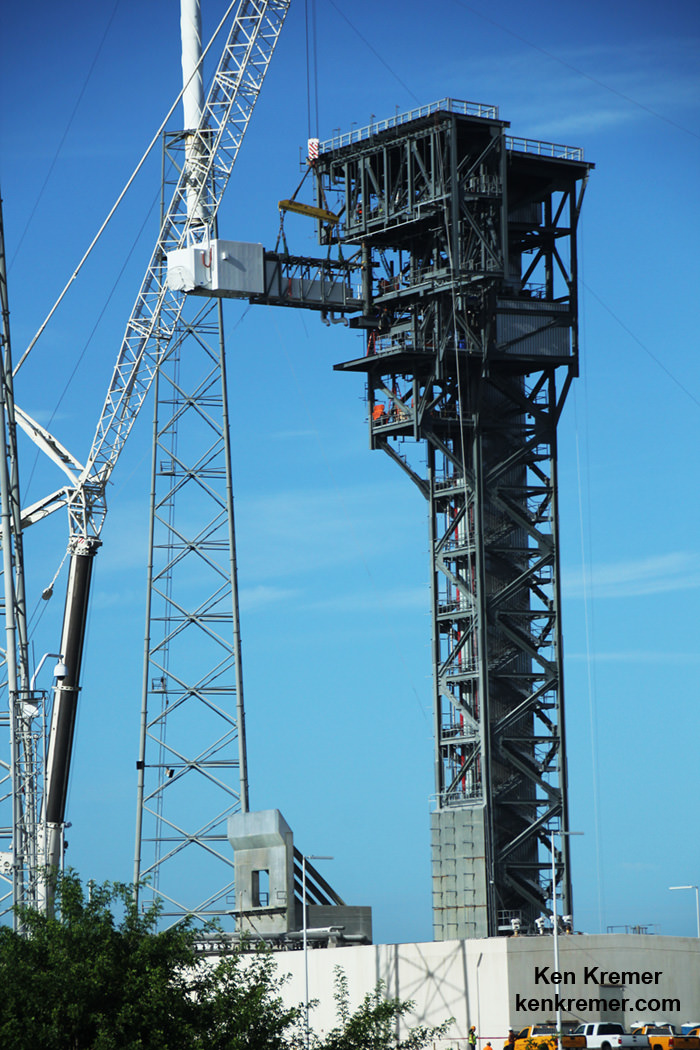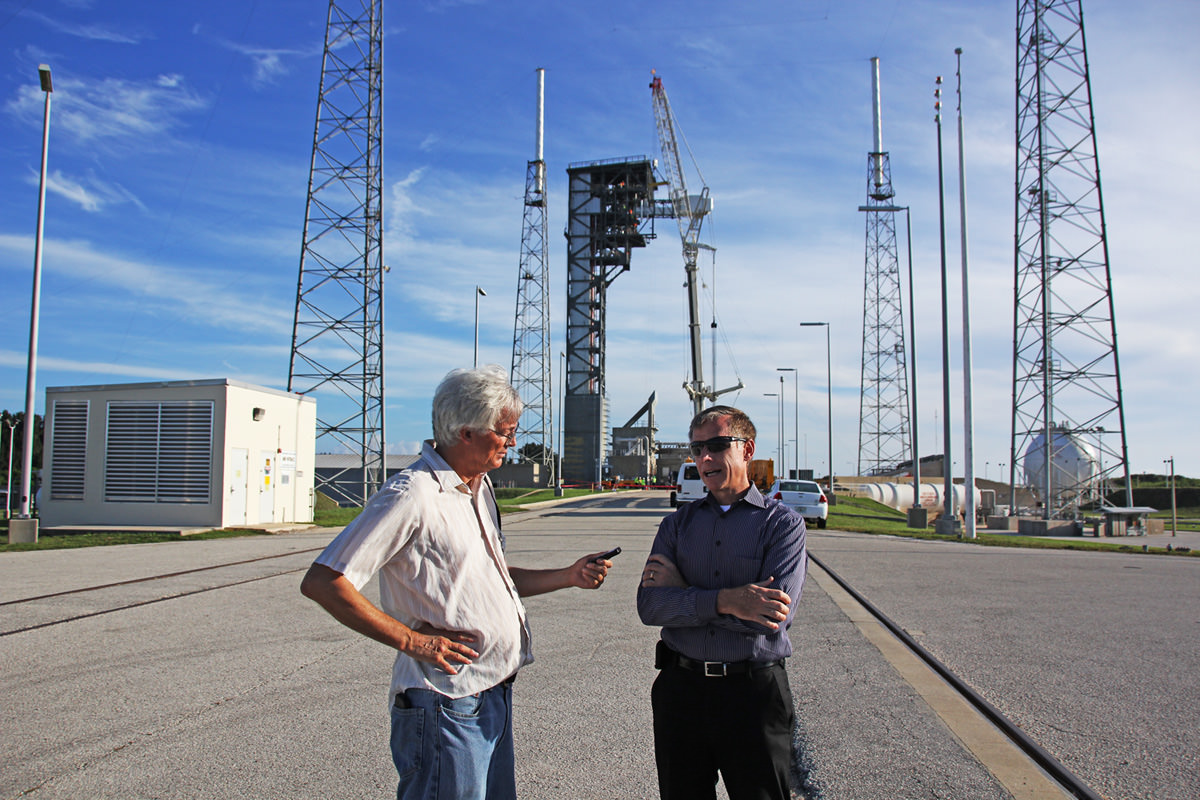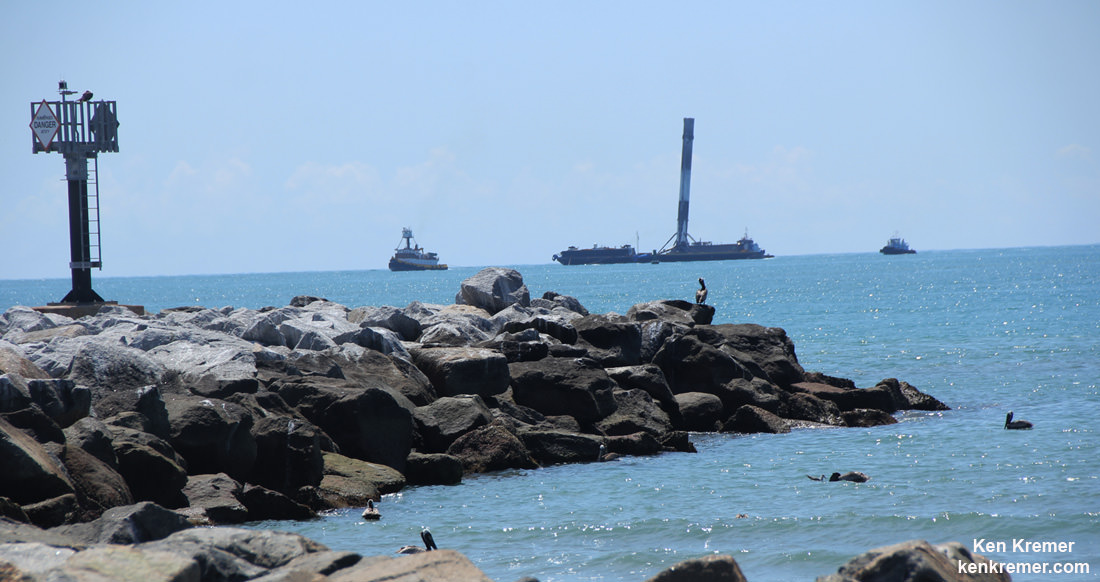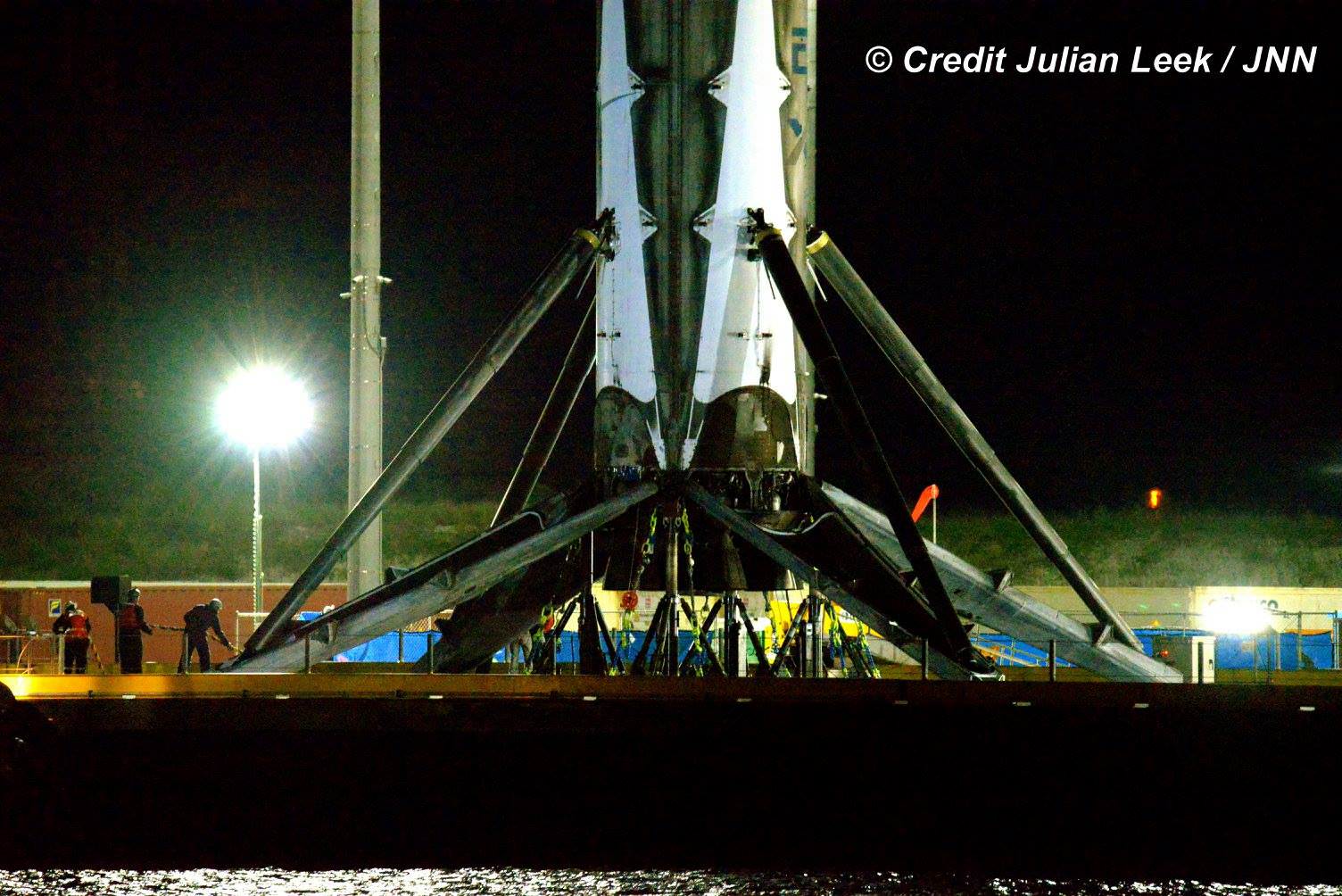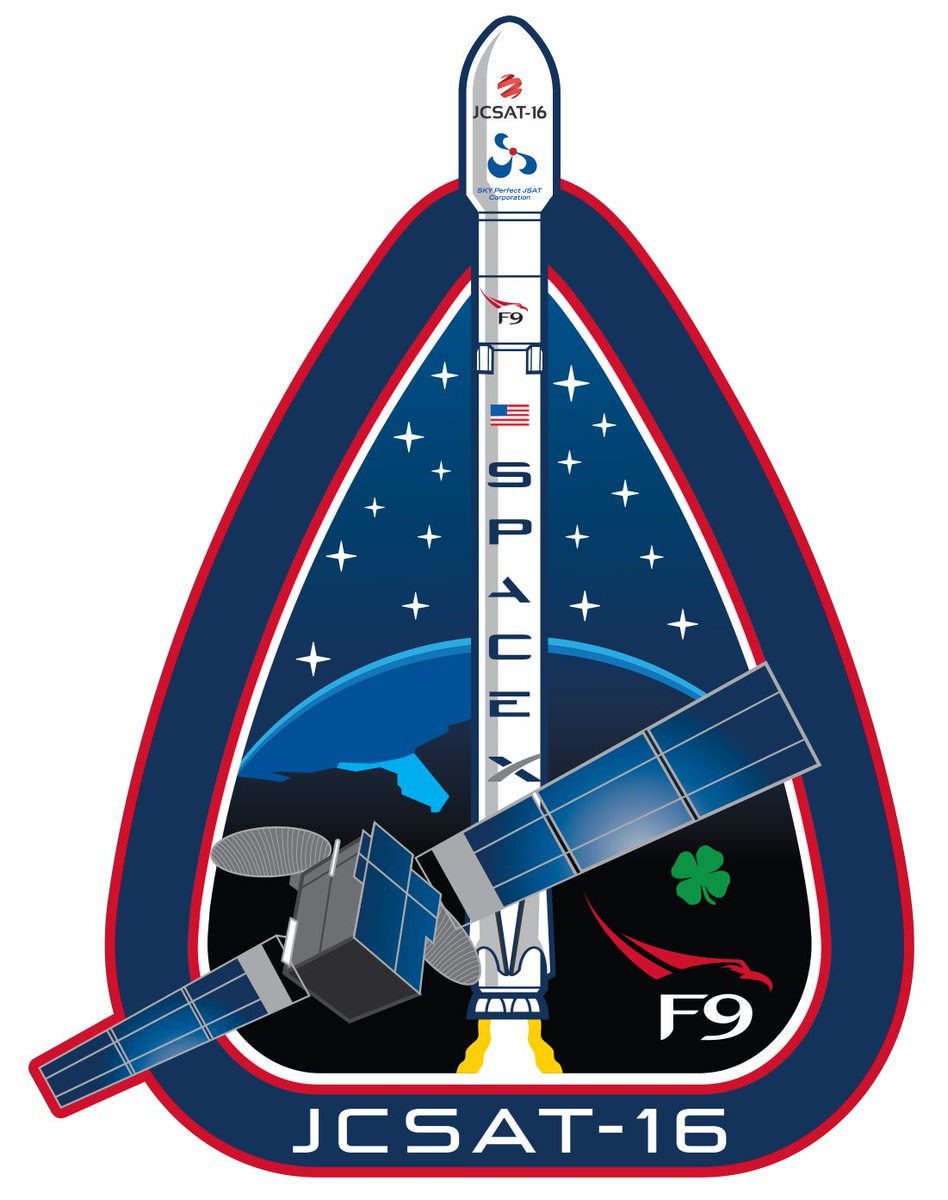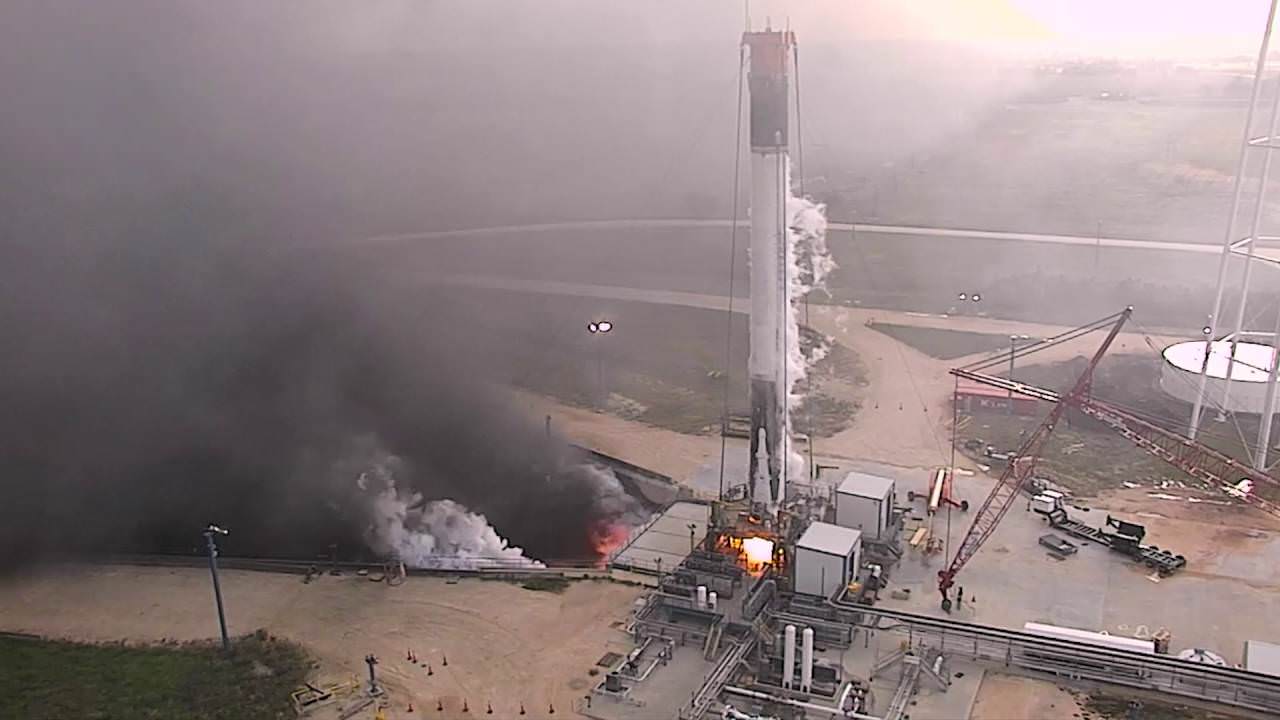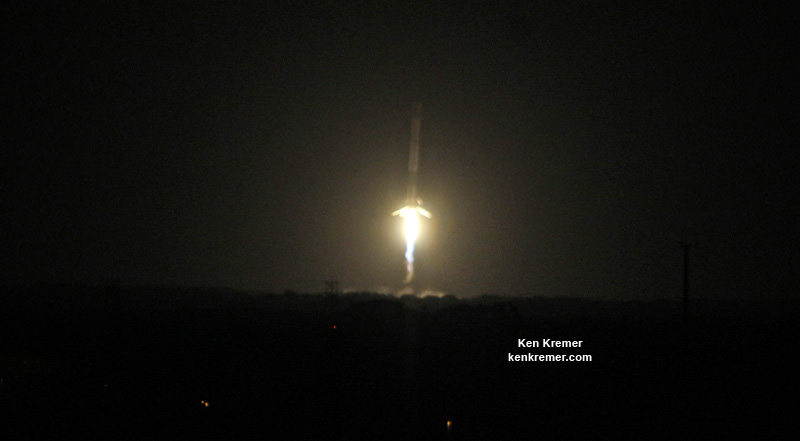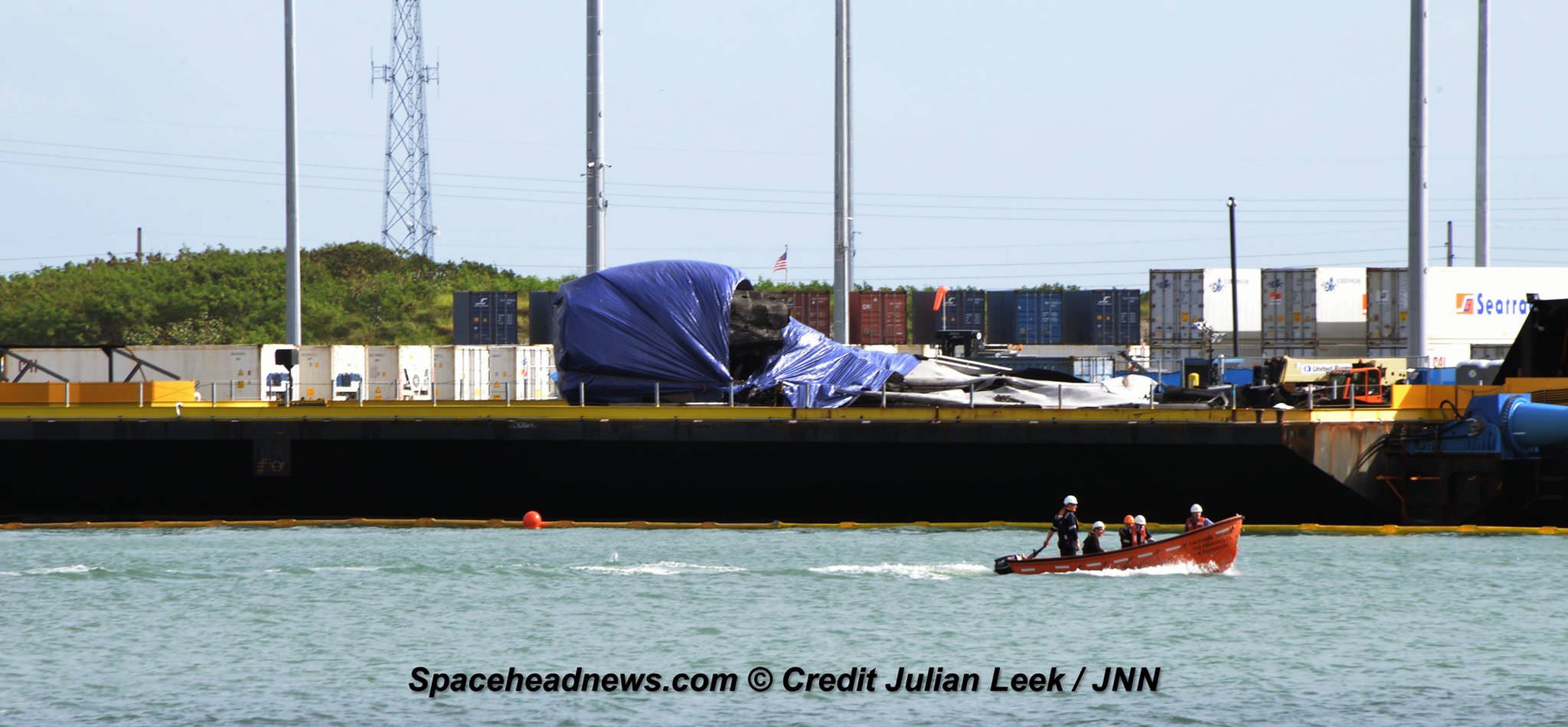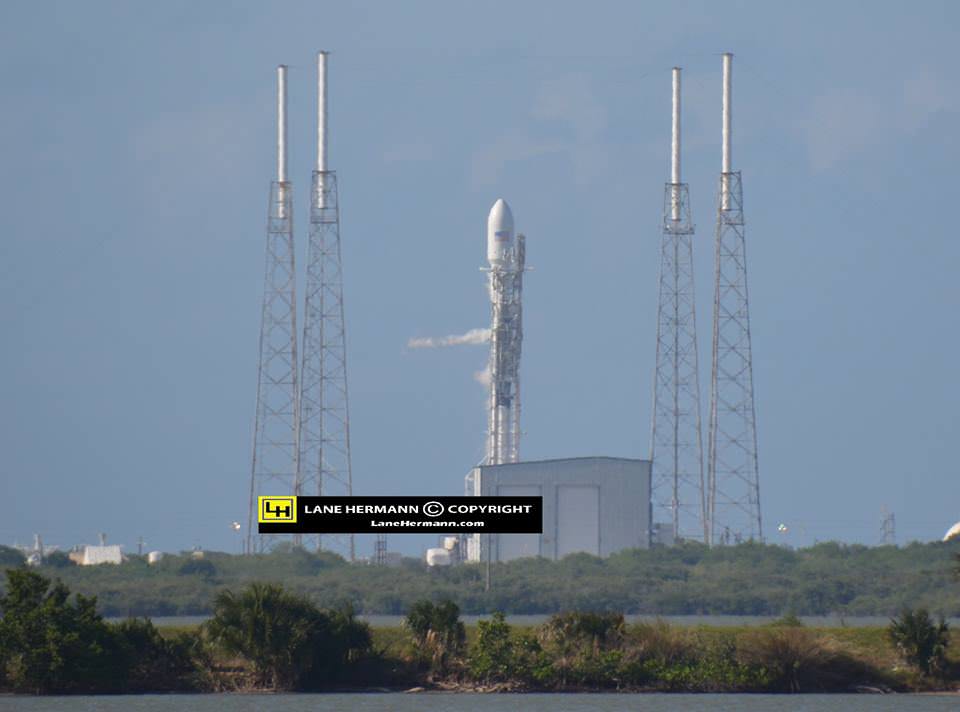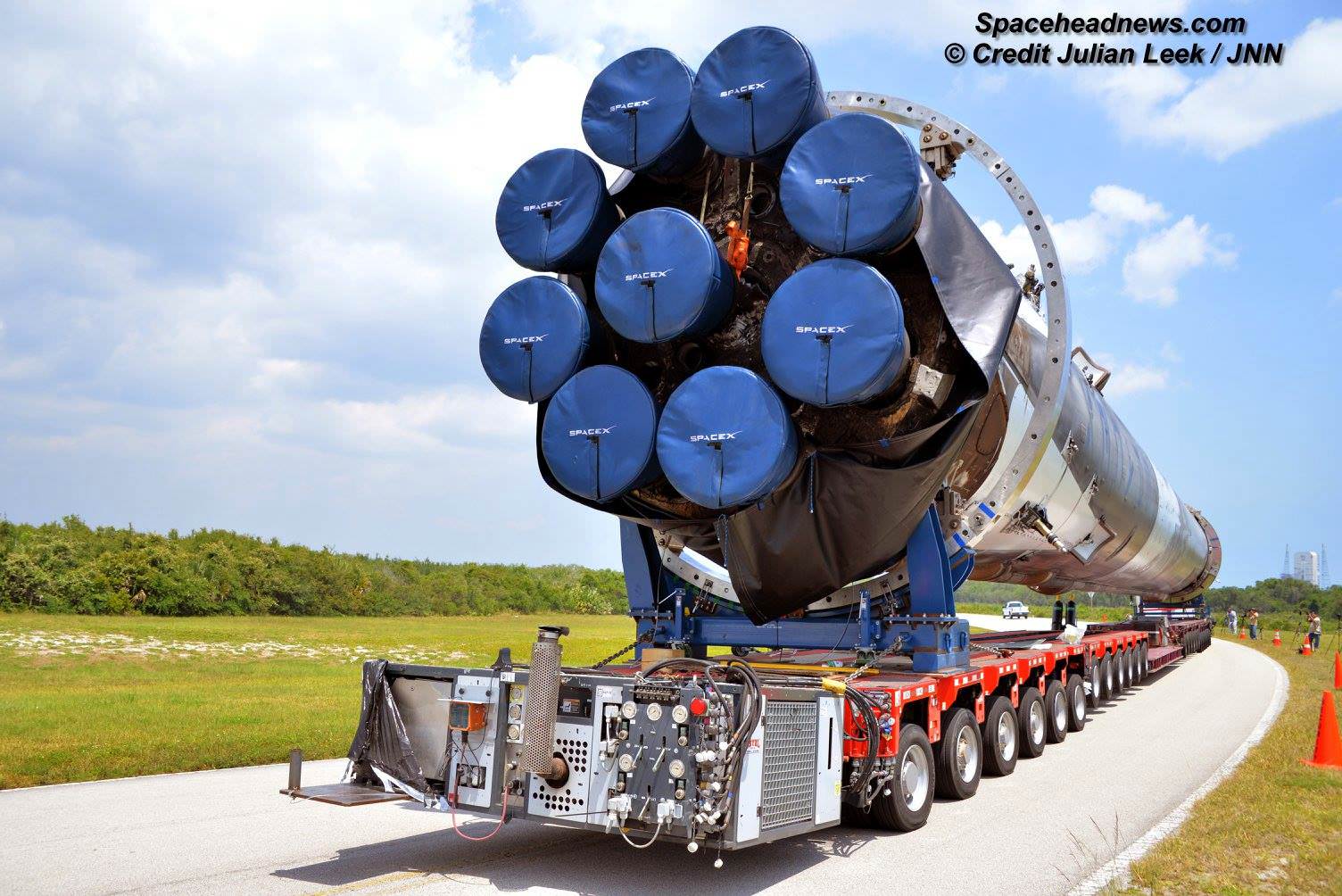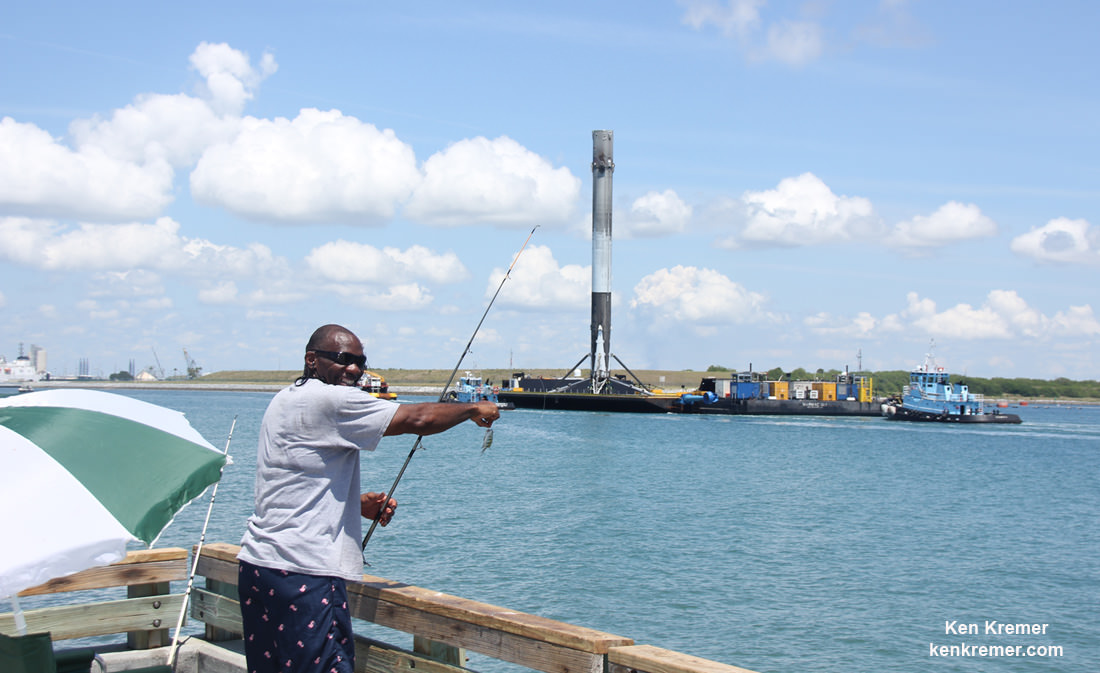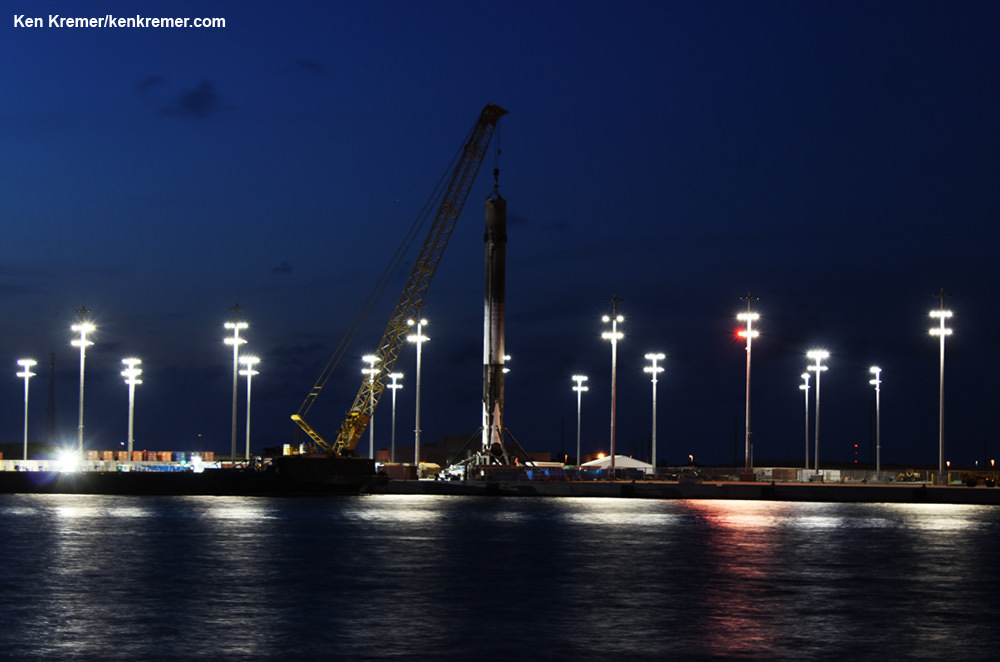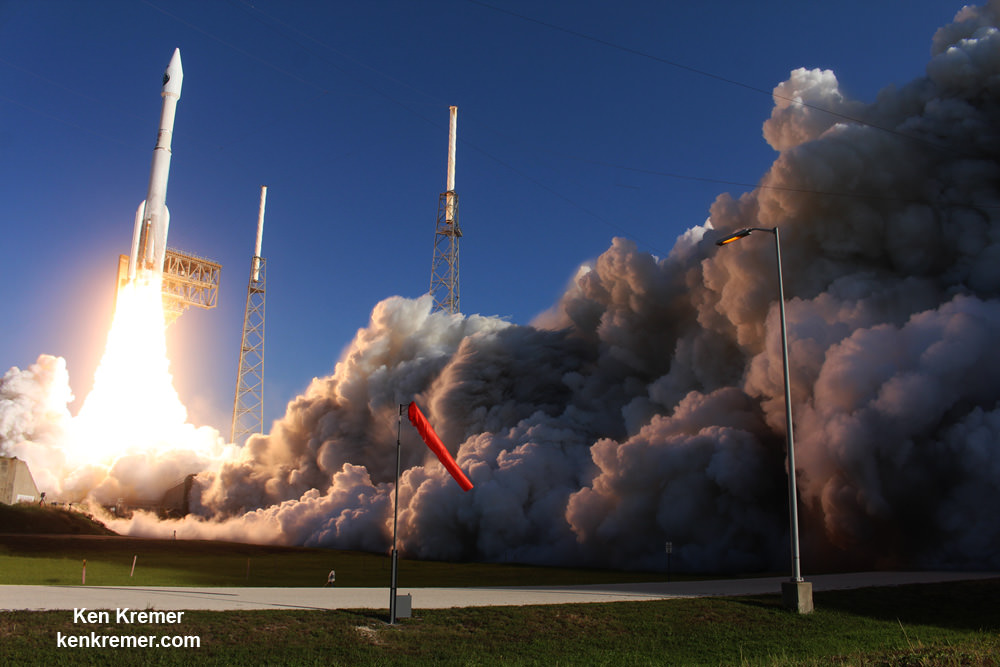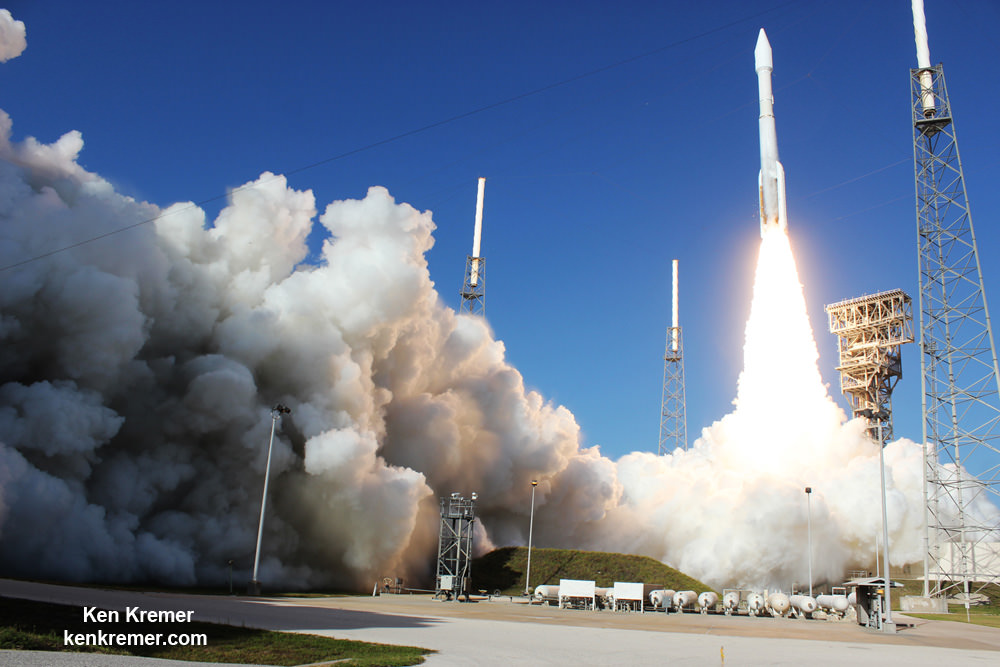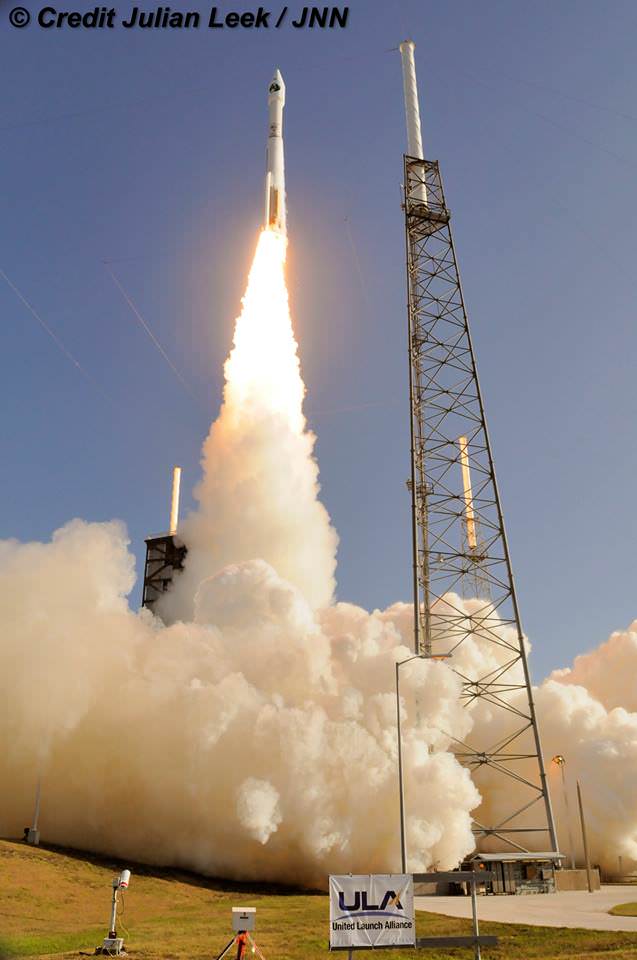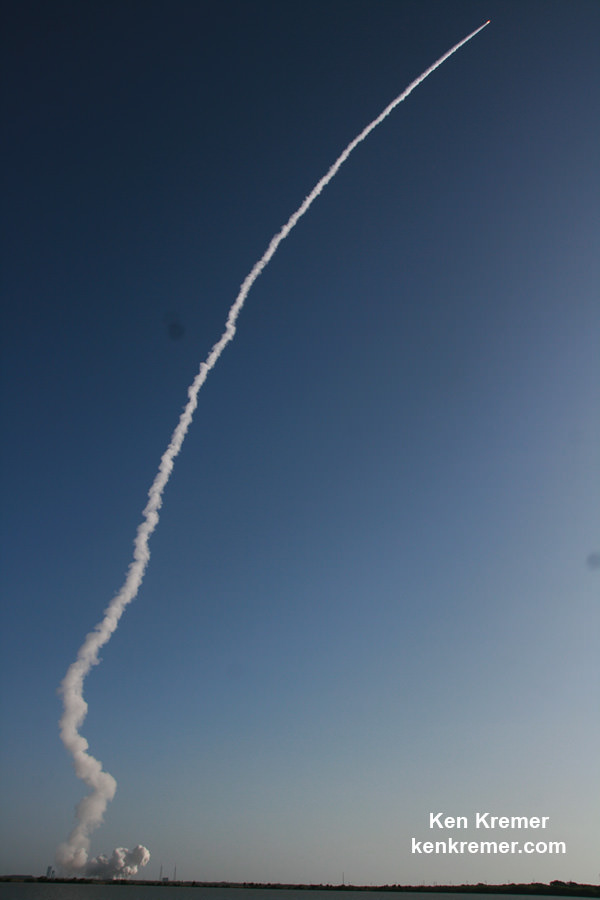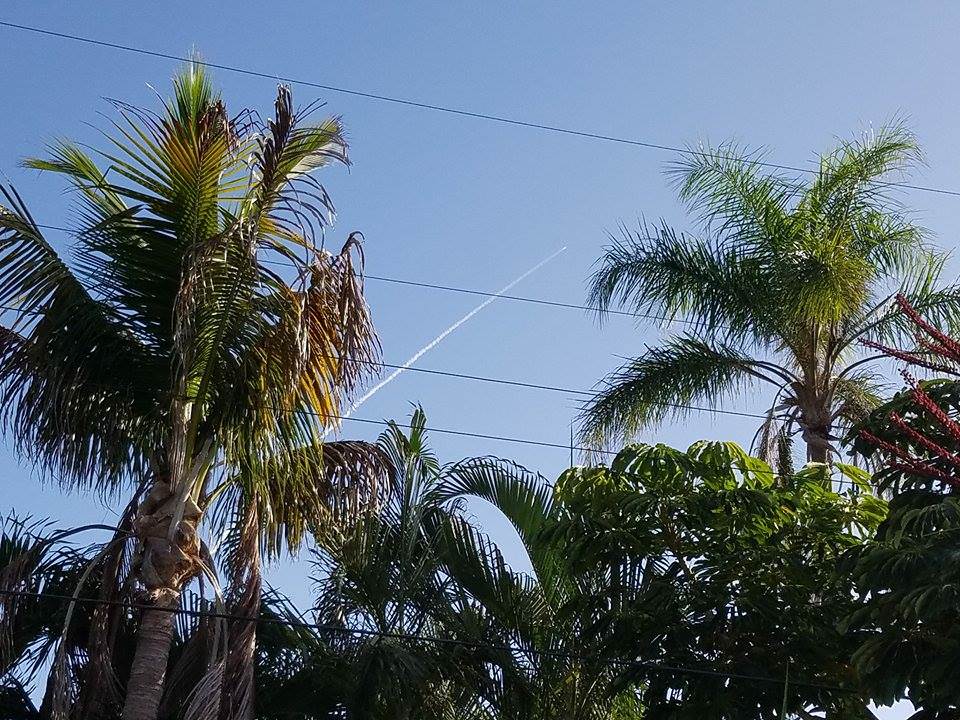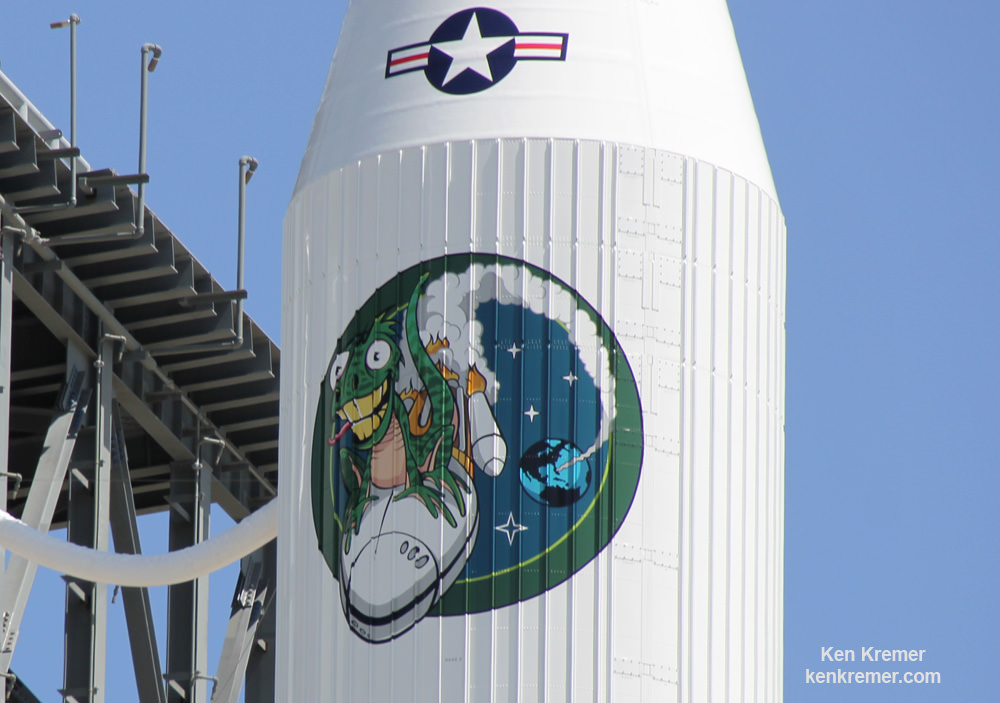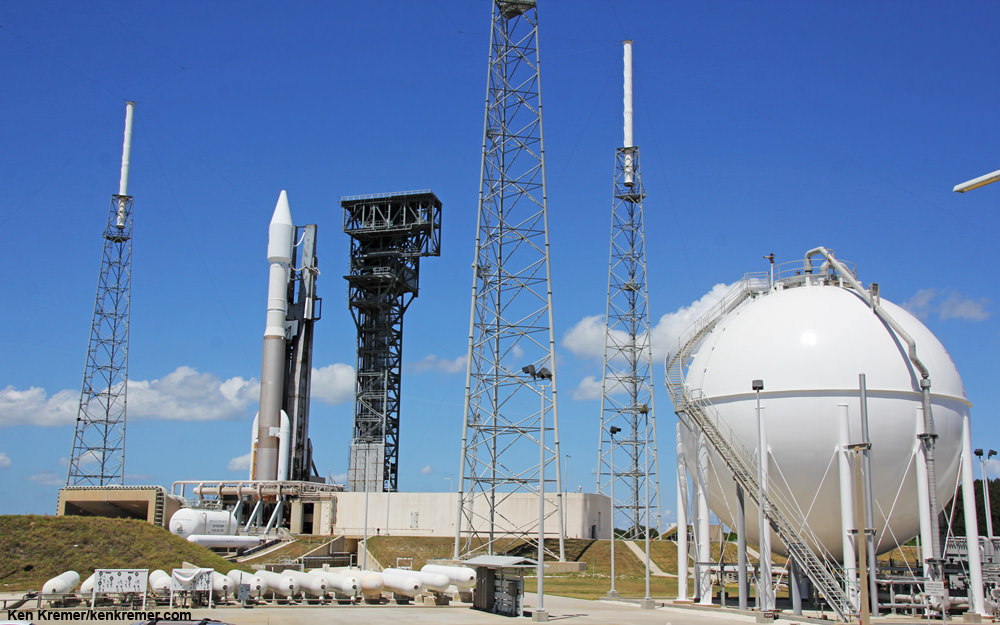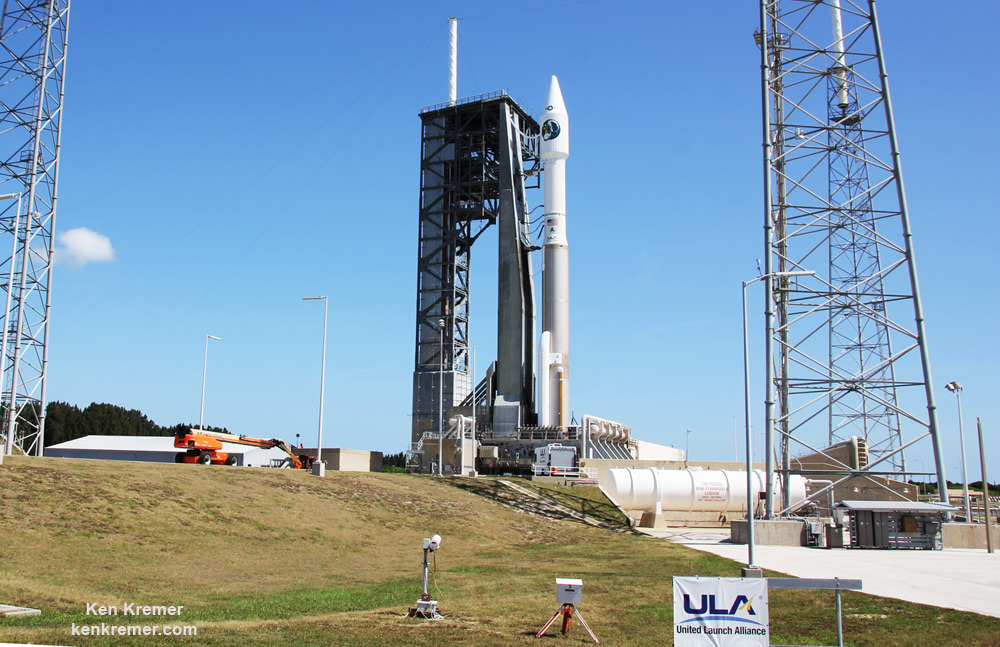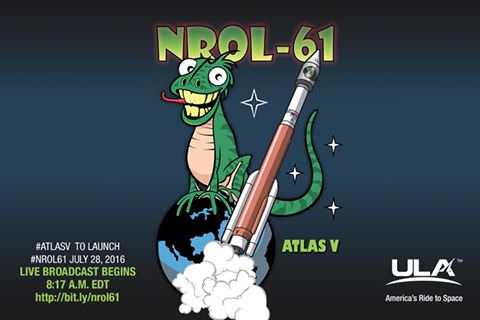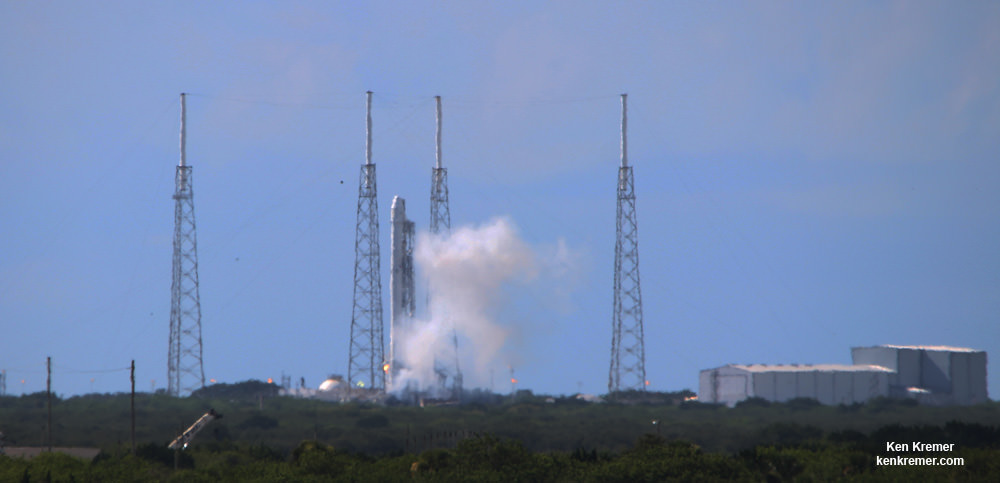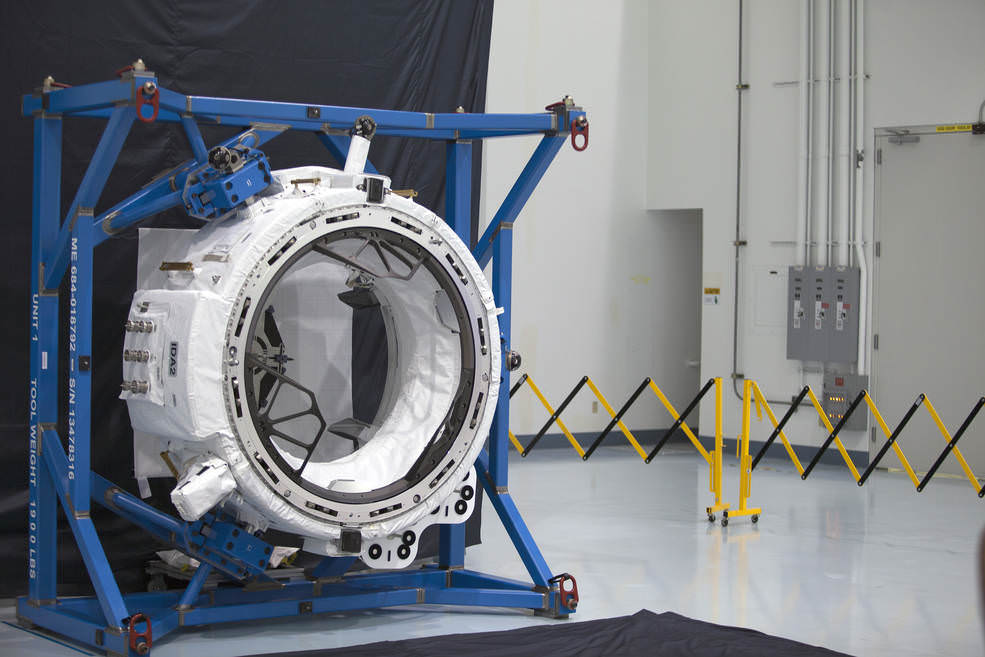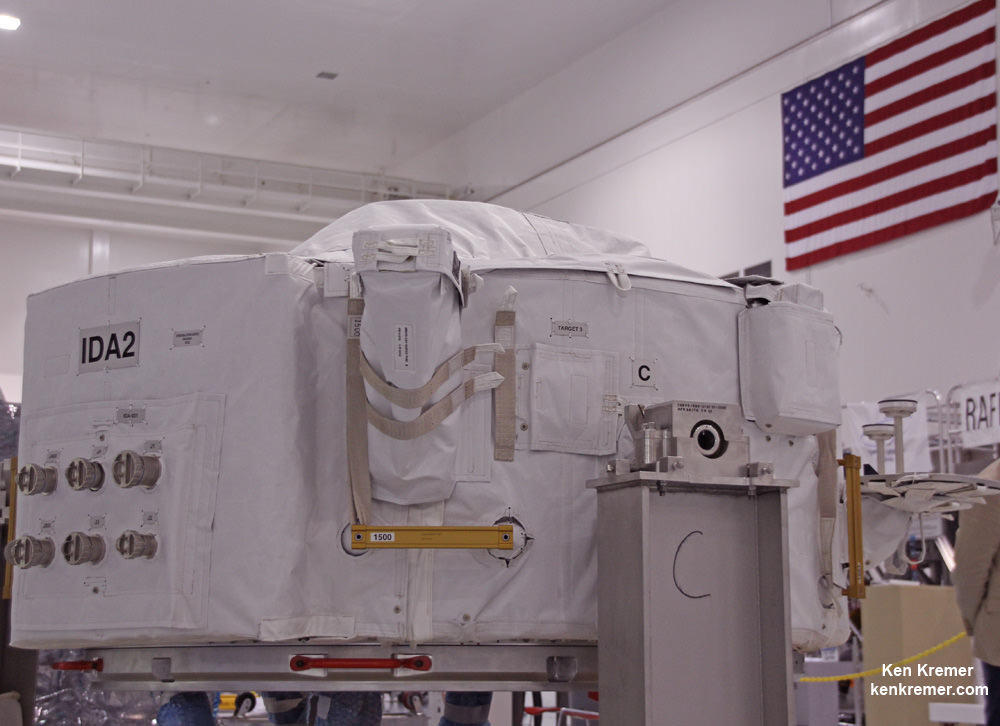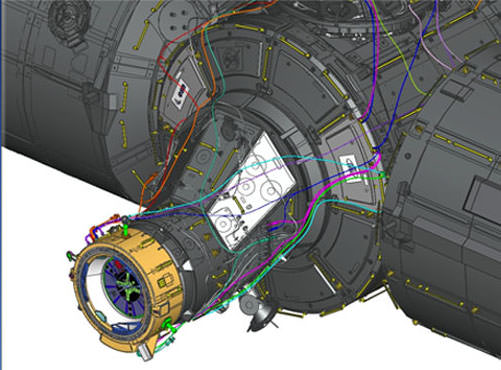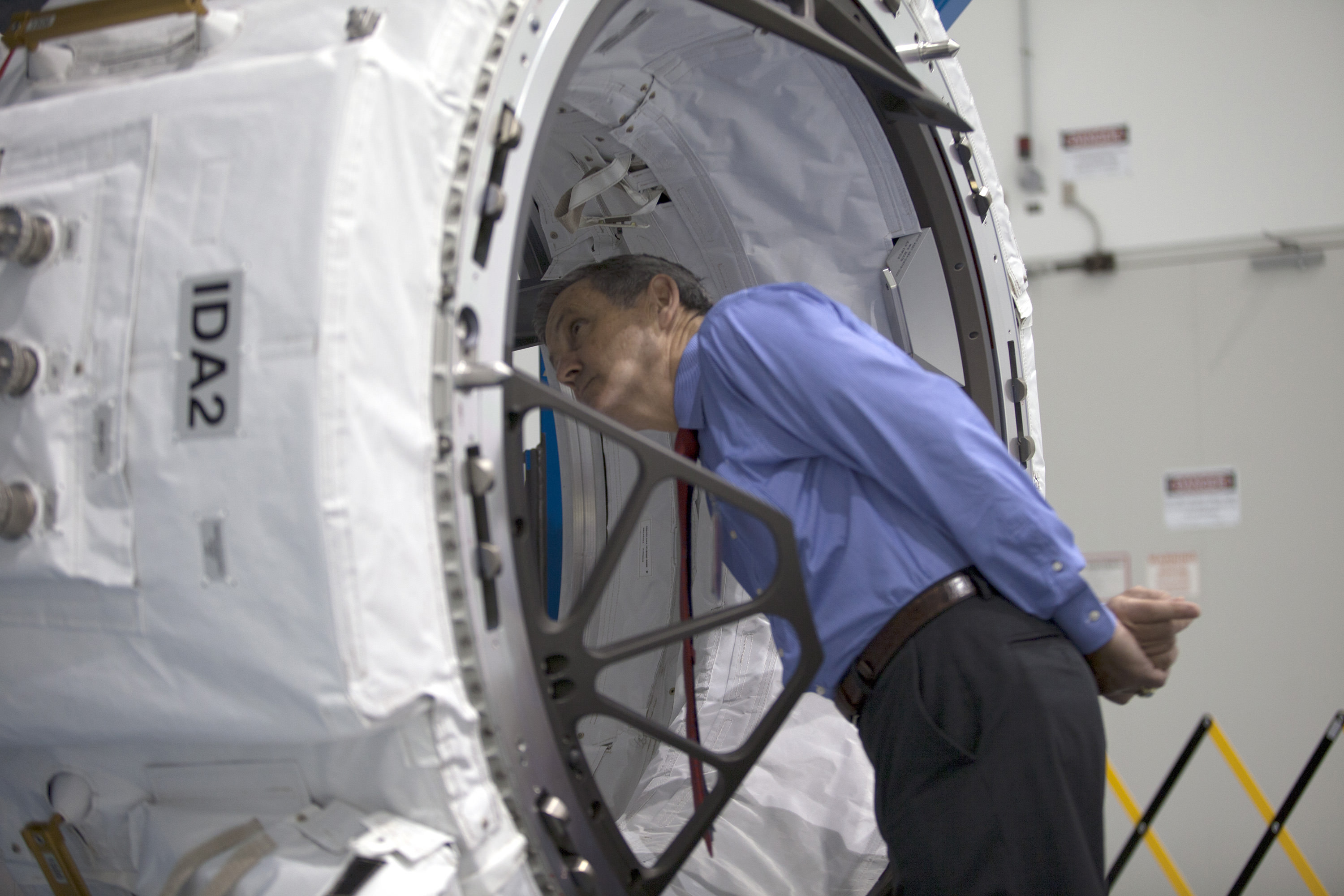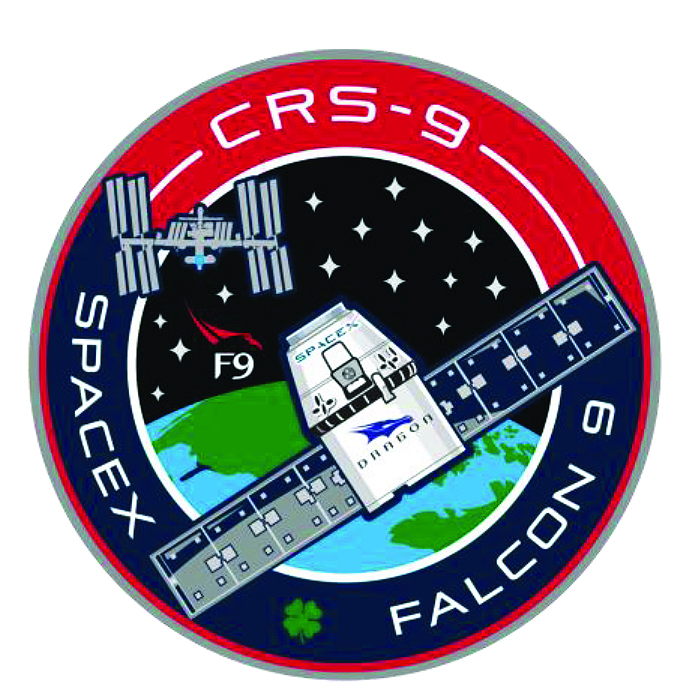
The SpaceX Falcon 9 rocket that suffered a catastrophic explosion this morning, Thursday, Sept. 1, at Cape Canaveral Air Force Station in Florida was captured in stunning detail in a spectacular video recorded by my space journalist colleague at USLaunchReport.
As seen in the still image above and the full video below, the rocket failure originated somewhere in the upper stage during fueling test operations at the launch pad, less than two days prior to its planned launch on Sept. 3. The rocket was swiftly consumed in a massive fireball and thunderous blasts accompanied by a vast plume of smoke rising from the wreckage visible for many miles.
Both the SpaceX rocket and the $200 million AMOS-6 Israeli commercial communications satellite payload were completely destroyed in the incident. Thankfully there were no injuries to anyone, because the pad is cleared during these types of operations.
This also marks the second time a Falcon 9 has exploded and will call into question the rocket’s reliability. The first failure involved a catastrophic mid air explosion about two and a half minutes after liftoff, during a cargo resupply launch for NASA to the International Space Station on June 28, 2015 – and witnessed by this author.
It took place during this morning’s prelaunch preparations for a static hot fire test of the nine Merlin 1 D engines powering the Falcon 9 first stage when engineers were loading the liquid oxygen (LOX) and RP-1 kerosene propellants for the test, according to SpaceX CEO Elon Musk.
“Loss of Falcon vehicle today during propellant fill operation,” tweeted SpaceX CEO and founder Elon Musk this afternoon a few hours after the launch pad explosion.
“Originated around upper stage oxygen tank. Cause still unknown. More soon.”
The Falcon 9 explosion occurred at approximately 9:07 a.m. EDT this morning at the SpaceX launch facilities at Space Launch Complex 40 on Cape Canaveral Air Force Station, according to statements from SpaceX and the USAF 45th Space Wing Public Affairs office.
All SpaceX launches will be placed on hold until a thorough investigation is conducted, the root cause is determined, and effective fixes and remedies are identified and instituted.
The planned engine test was being conducted as part of routine preparations for the scheduled liftoff of the Falcon 9 on Saturday, September 3, with an Israeli telecommunications satellite that would have also been used by Facebook.
During the static fire test, which is a full launch dress rehearsal, the rocket is loaded with propellants and is held down at pad 40 while the engines are typically fired for a few seconds.
Here is the full video from my space journalist friend and colleague Mike Wagner of USLaunchReport:
Video Caption: SpaceX – Static Fire Anomaly – AMOS-6 – 09-01-2016. Credit: USLaunchReport
The 229-foot-tall (70-meter) SpaceX Falcon 9 had been slated for an overnight blastoff on Saturday, September 3 at 3 a.m. from pad 40 with the 6 ton AMOS-6 telecommunications satellite valued at some $200 million.
In the video you can clearly see the intensely bright explosion flash near the top of the upper stage that quickly envelopes the entire rocket in a fireball, followed later by multiple loud bangs from the disaster echoing across and beyond the pad.
Seconds later the nose cone and payload break away violently, falling away and crashing into the ground and generating a new round of loud explosions and fires and a vast plume of smoke rising up.
At the end the rocket is quite visibly no longer standing. Only the strongback erector is still standing at pad 40. And both the strongback and the pad structure seems to have suffered significant damage.
This would have been the 9th Falcon 9 launch of 2016.
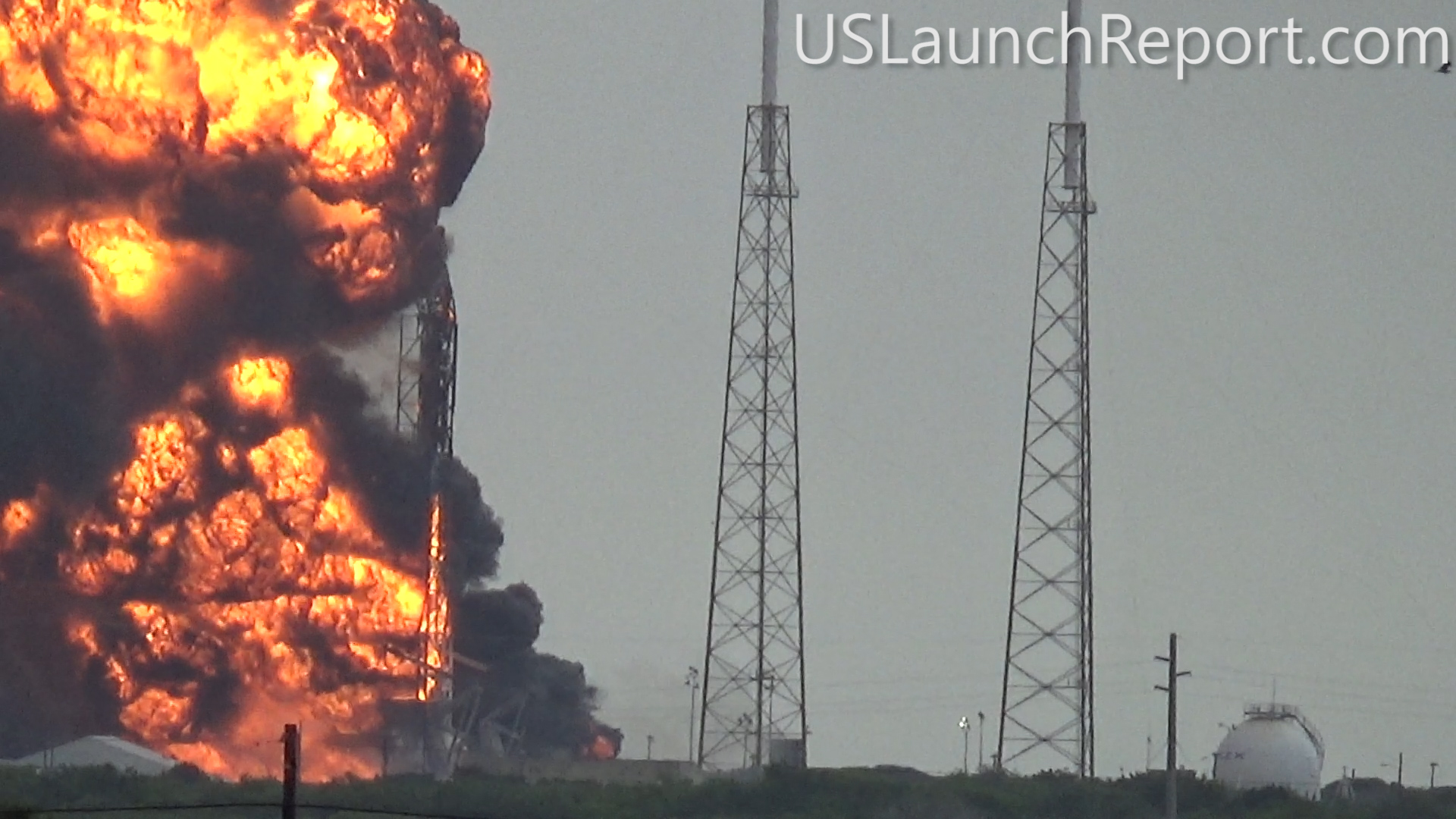
SpaceX media relations issued this updated statement:
“At approximately 9:07 am ET, during a standard pre-launch static fire test for the AMOS-6 mission, there was an anomaly at SpaceX’s Cape Canaveral Space Launch Complex 40 resulting in loss of the vehicle.”
“The anomaly originated around the upper stage oxygen tank and occurred during propellant loading of the vehicle. Per standard operating procedure, all personnel were clear of the pad and there were no injuries.”
“We are continuing to review the data to identify the root cause. Additional updates will be provided as they become available.”
Listen to my BBC Radio 5 Live interview conducted late this afternoon:
Today’s explosion and the total loss of vehicle and payload will certainly have far reaching consequences for not just SpaceX and the commercial satellite provider and end users, but also NASA, the International Space Station, the US military, and every other customer under a launch contact with the fast growing aerospace firm.
The ISS is impacted because SpaceX is one of two NASA contracted firms launching cargo resupply missions to the ISS – along with Orbital ATK.
Continued operations of the ISS depends on a reliable and robust lifeline of periodic supply trains from SpaceX and Orbital ATK.
In fact the most recent SpaceX Drago cargo freighter launched on the CRS-9 mission to the ISS on July 18 as I witnessed and reported here. And just successfully returned to Earth with 3000 pounds of NASA science cargo and research samples last week on Aug. 26.
The SpaceX Dragon launches to the ISS will be put on hold as the investigation moves forward.
Furthermore SpaceX is manufacturing a Crew Dragon designed to launch astronauts to the ISS atop this same Falcon 9 rocket. So that will also have to be evaluated.
SpaceX is also trying to recover and recycle the Falcon 9 first stage.
To date SpaceX has recovered 6 first stage Falcon 9 boosters by land and by sea.

Indeed as I reported just 2 days ago, SpaceX announced a contract with SES to fly the SES-10 communications satellite on a recycled Falcon 9, before the end of the year and perhaps as soon as October.
But this explosion will set back that effort and force a halt to all SpaceX launches until the root cause of the disaster is determined.
Here’s one of my photos showing the prior SpaceX rocket failure in June 2015 during the CRS-7 cargo delivery mission to the ISS:
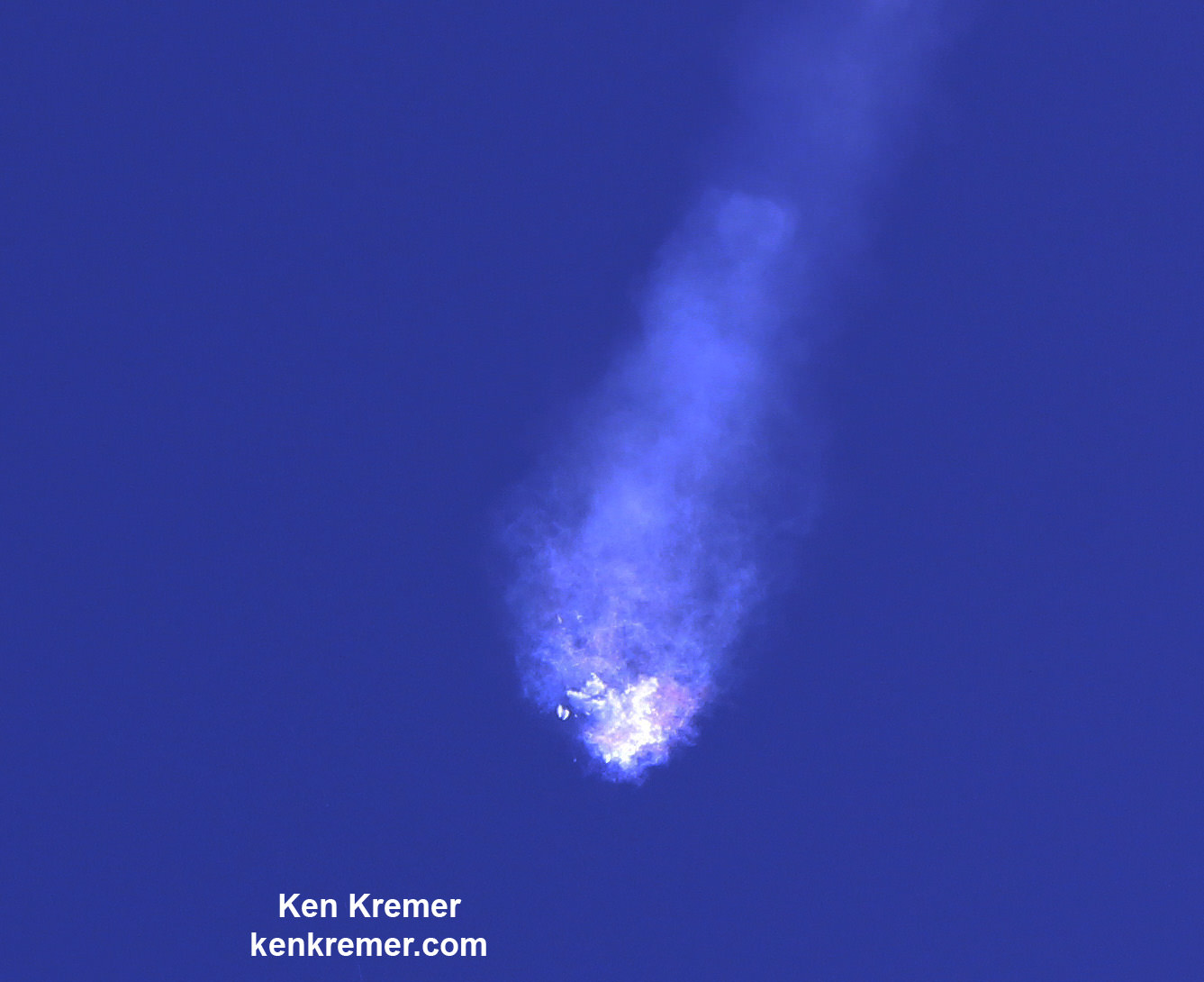
Here’s the prior SpaceX Falcon 9 on pad 40 before the successful liftoff with the JCSAT-16 Japanese telecom satellite on Aug. 14, 2016:
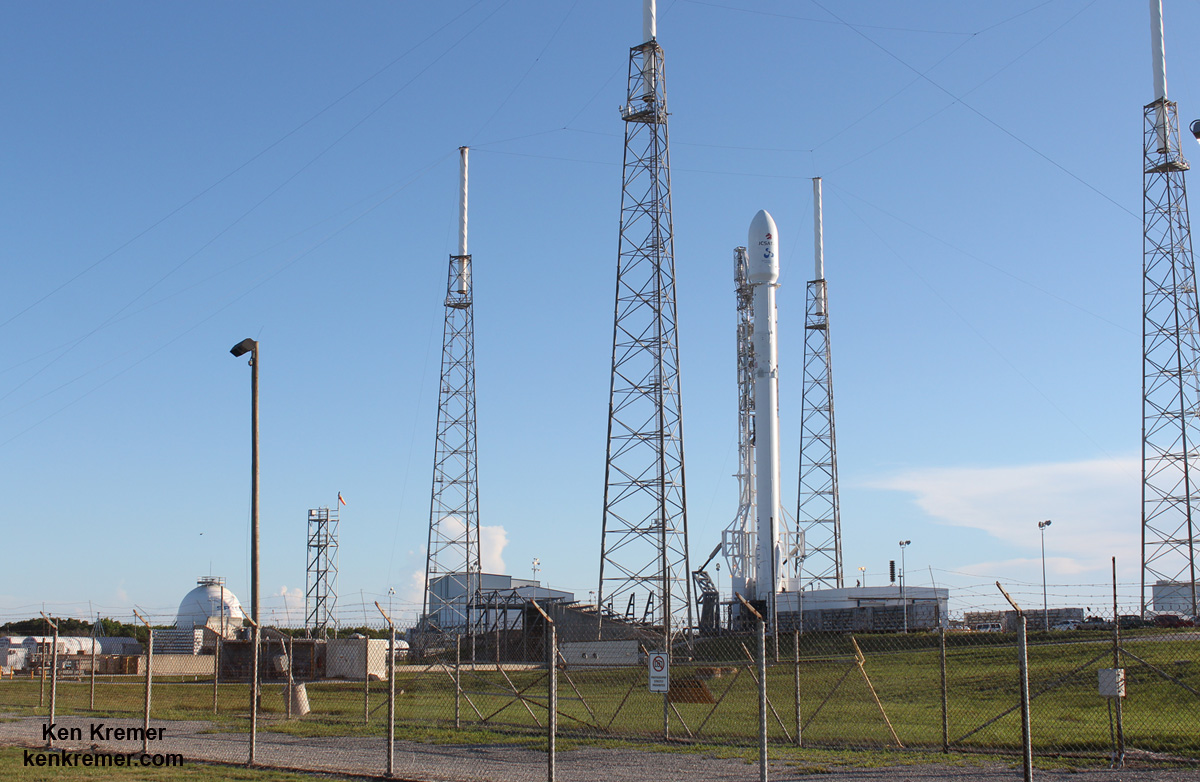
The AMOS-6 communications satellite was built by Israel Aerospace Industries for Space Communication Ltd. It was planned to provide communication services including direct satellite home internet for Africa, the Middle East and Europe.
Cape Canaveral Air Force Station Emergency Management quickly provided initial on-scene response and set up roadblocks, said the Air Force in a statement.
“Days like today are difficult for many reasons,” said Brig. Gen. Wayne Monteith, 45th Space Wing commander.
“There was the potential for things to be a lot worse; however, due to our processes and procedures no one was injured as a result of this incident. I am proud of our team and how we managed today’s response and our goal moving forward will be to assist and provide support wherever needed. Space is inherently dangerous and because of that, the Air Force is always ready.”
Stay tuned here for Ken’s continuing Earth and Planetary science and human spaceflight news.
